




bob snow was a commercial airline pilot for 31 years, until a clear spring day in 2022.
One moment, he was in command of a 150,000-pound plane; the next, he was technically dead.
Just as the plane reached Gate C21 at Dallas airport, he experienced a cardiac arrest in the cockpit.
By miracle, a medical crew who had been called out for what turned out to be a false alarm at an adjacent aircraft was able to attend to Snow almost immediately.
Snow, who had no history of heart failure, remains grounded on disability from his job with American Airlines.
He suspects that the COVID-19 vaccine he was forced to take as a requirement to keep his job put him at greater risk of developing heart problems.
Soon after his cardiac arrest, Capt. Snow became one of the first commercial airline pilots to go public with his concerns, in a widely circulated video.

Epoch Times reporter Janice Hisle sat down for a series of exclusive interviews with Snow and his family, where they shared about his brush with death.
Capt. Bob Snow, who survived a cardiac arrest, believes the COVID-19 vaccine he took put him at greater risk.
JASPER FAKKERT EDITOR-IN-CHIEFCHANNALY PHILIPP
LIFE & TRADITION, TRAVEL EDITOR
CHRISY TRUDEAU MIND & BODY EDITOR
CRYSTAL SHI HOME, FOOD EDITOR
SHARON KILARSKI ARTS & CULTURE EDITOR
BILL LINDSEY LUXURY EDITOR
FEI MENG, BIBA KAYEWICH ILLUSTRATORS
SHANSHAN HU PRODUCTION
CONTACT US
THE EPOCH TIMES ASSOCIATION INC. 229 W.28TH ST., FL.7 NEW YORK, NY 10001
SUBSCRIPTIONS
READEPOCHINSIGHT.COM
GENERAL INQUIRIES, LETTERS TO THE EDITOR HELP.THEEPOCHTIMES.COM

ADVERTISING
ADVERTISENOW@EPOCHTIMES.COM
(USPS21-800) IS PUBLISHED WEEKLY BY THE EPOCH MEDIA GROUP, 9550 FLAIR DR. SUITE 411, EL MONTE, CA 91731-2922. PERIODICAL POSTAGE PAID AT EL MONTE, CA, AND ADDITIONAL MAILING OFFICES.
POSTMASTER: SEND ADDRESS CHANGES TO THE EPOCH TIMES, 229 W. 28TH STREET, FLOOR 5, NEW YORK, NY 10001.
Jasper Fakkert Editor-in-chief
28 | Voting Abroad
Forgotten overseas ballots have the potential to alter election results.
34 | Scot-Free Democrats have a history of escaping prosecution for election violations.
38 | Derailment
Aftermath
East Palestine residents continue to feel anxious about returning to their homes for good.
46 | Dire Shortage
With American nurses feeling burned out, the recruitment rate is insufficient to meet demand.
56 | Cloud Computing
Why isn’t the left holding Big Tech accountable for its pollution?
57 | National Security
The CCP’s rapid military growth may make it a permanent fixture.
58 | US Economy
Manufacturing growth won’t produce as many jobs as expected.
59 | Digital Currencies
Does the digital dollar pose a threat to American freedom?
60 | De-dollarization
Only the U.S. government and the Fed can dethrone the dollar.
14 |
Miracle at Gate C21
An airline captain incapacitated on duty believes he was injured by a COVID-19 vaccine.
22 |
2024 Election
President Joe Biden has officially announced that he will seek a second term.
50 |
A march brings together thousands calling for an end to the CCP’s brutality against Falun Gong practitioners.
South Korean President Yoon Suk-yeol speaks about the continued partnership between South Korea and the United States at a joint meeting of Congress in the House Chamber of the U.S. Capitol in Washington on April 27.

61 | Household Debt
“Buy now, pay later” applications contribute to rising U.S. debt.
62 | Vaccines and Tyrants
Robert F. Kennedy Jr. shares his thoughts on vaccine testing and government demagoguery.
68 | A Great Life Plan
The Marine’s Prayer can serve as a roadmap to a meaningful life.
70 | Trump Style
A rare chance to see Ivana Trump’s Upper East Side townhouse.
72 | Sherry Triangle
This section of Spain is known for wines, flamenco, and great food.
75 | New England Cuisine
Chef Evan Hennessey makes New Hampshire a top destination for foodies.
76 | Training
Best Friends
Many dogs are eager to be taught how to make your life better.
79 | See Clearly
A selection of eye protection designed to safeguard your vision.
83 | Family Fun
How to make sure your next family vacation is the best one ever.

A CANADAIR WATER BOMBER SPRAYS NEXT TO firefighters during a demonstration of forest firefighting equipment at Nîmes Alès Camargue Cévennes Airport in Saint-Gilles, France, on April 25. The civil service owns 12 Canadair aircraft, which can land and take off on water, be refueled midflight, and need only nine to 12 seconds to collect six tons of water.
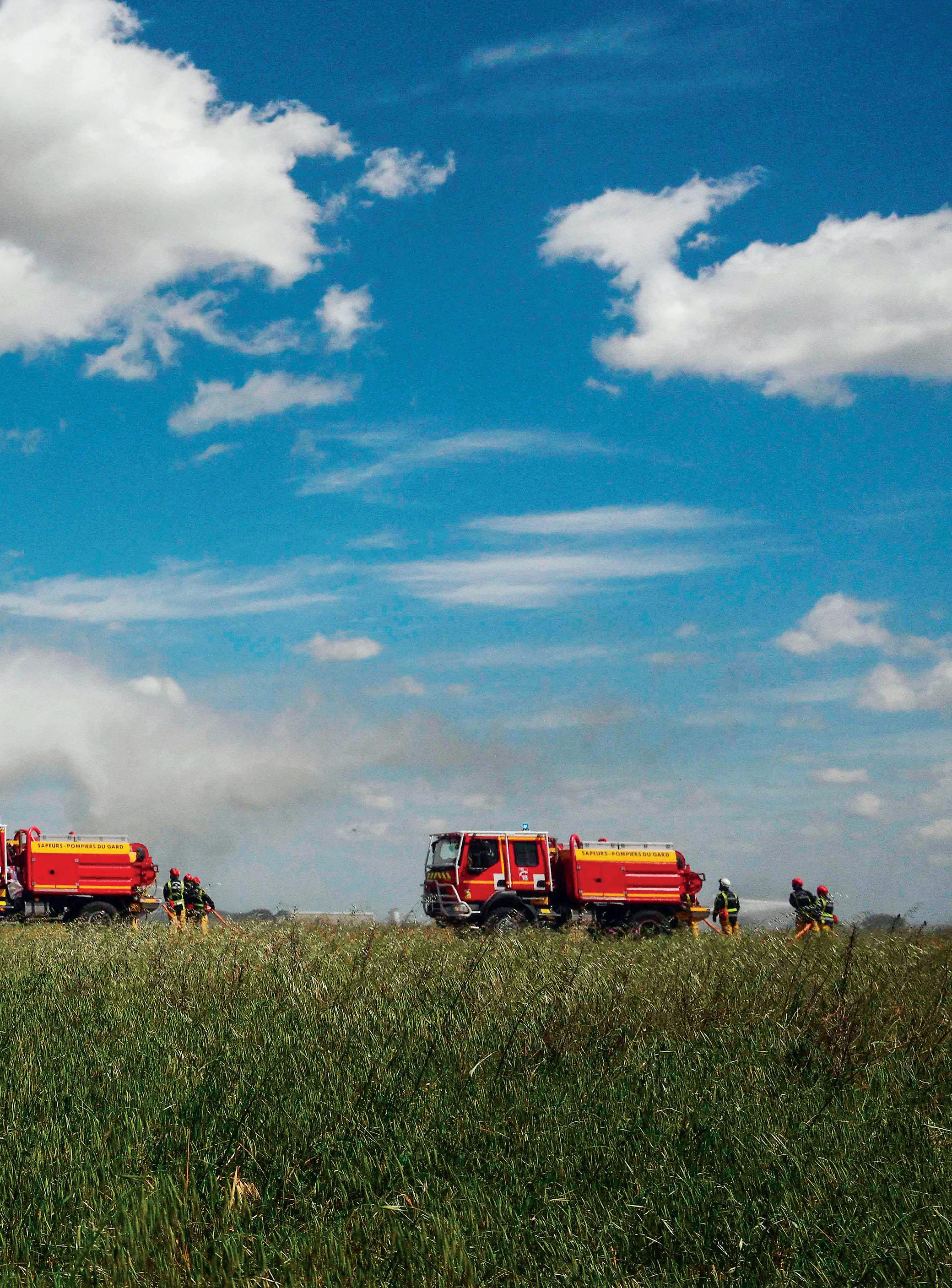 PHOTO BY CHRISTOPHE SIMON/AFP VIA GETTY IMAGES
PHOTO BY CHRISTOPHE SIMON/AFP VIA GETTY IMAGES

Falun Gong practitioners participate in a march to call for an end to the Chinese Communist Party’s persecution of their faith, in Queens, N.Y., on April 23.

‘Never Resided’ Voting
Absentee voting from abroad presents myriad fraud vulnerabilities in U.S. elections. 28
The ‘New Reality’ Fear of lingering toxic chemicals is preventing longtime residents of East Palestine from returning home. 38
Nursing Shortage Hospitals face staffing shortages as many nurses plan to quit, citing burnout. 46


Netflix says it will invest $2.5 billion in South Korea over the next four years to produce Korean TV series, movies, and unscripted shows, doubling its investment in the market since 2016.

65% 6%
of American voters believe that undercover federal agents helped provoke rioting at the U.S. Capitol on Jan. 6, 2021, according to a Rasmussen Reports poll.
UPS says the U.S. economy is slowing, as the shipping company’s revenue fell 6 percent in the first quarter from a year earlier. The company’s operating profit, it said, fell about 22 percent.
3,000 MIGRANTS
About 3,000 migrants are walking north in a large procession from southern Mexico, in what organizers say is a protest demanding an end to detention centers such as the one that burned down last month in Ciudad Juárez, killing dozens.
$25,000 Stipend — Texas schools could offer a stipend of up to $25,000 for public school employees who are authorized to act as armed guards on school grounds, under a proposal by state lawmakers in response to recent mass shootings at educational facilities across the country.
“I’ll do everything in my power to stop them— including voting to repeal the IRA.”
“This economic catastrophe is preventable. Congress must vote to raise or suspend the debt limit.”
TreasurySecretary Janet Yellen, warning about the possible fallout that a failure to raise the federal debt limit would trigger
WALT DISNEY PARKS AND RESORTS has sued Florida Gov. Ron DeSantis and his hand-picked board that oversees Disney’s special taxing district.
In the complaint filed in the U.S. District Court for the Northwestern District of Florida, the theme park giant accuses the potential 2024 presidential candidate of engaging in “a targeted campaign of government retaliation” as “punishment for Disney’s protected speech.”
IN THE WAKE OF TUCKER CARLSON’S SUDDEN EXIT from Fox News, ratings for the cable news channel’s 8 p.m. time slot saw a major drop on April 24 and especially April 25.

The former host of “Tucker Carlson Tonight” generated more than 3.3 million viewers nightly, according to Nielsen data. “Fox News Tonight,” the show replacing Carlson’s program, drew just 2.6 million viewers—about a 20 percent drop—in the coveted Monday evening time slot, The Hollywood Reporter said.
On Tuesday, however, the program’s ratings plunged even further. According to Mediaite, only 1.7 million total viewers tuned in at 8 p.m., or about half of Carlson’s nightly viewership.
At the same time, Fox Corp.—the company that owns Fox News—has seen its shares tumble by about 3.75 percent since Monday, coinciding with Carlson’s departure.
Fox said that “Fox News Tonight” will feature a rotating slate of hosts before a permanent replacement is named. “Fox and Friends” co-anchor Brian Kilmeade was tapped to host the program on both Monday and Tuesday.
VACCINES
VACCINES DON’T HAVE TO PREVENT infection or transmission to be cleared in the United States, the nation’s top regulatory agency said in a new document.
“It is important to note that FDA’s authorization and licensure standards for vaccines do not require demonstration of the prevention of infection or transmission,” Dr. Peter Marks, a top official at the U.S. Food and Drug Administration, said in the document.
Vaccines are traditionally known as drugs that prevent an illness. The U.S. Centers for Disease Control and Prevention for years said a vaccine is a product that “produces immunity” while vaccination is an injection of an infectious organism “in order to prevent the disease.” The agency changed its definitions after people correctly noted that COVID-19 vaccines don’t prevent infection.
The battle between Disney and DeSantis began nearly two years ago when the family theme park mandated COVID-19 vaccinations for its employees. DeSantis countered by signing legislation effectively banning vaccine mandates in the state.

Disney then caved to pressure from LGBT activists to oppose the governor’s Parental Rights in Education legislation, dubbed by critics as the “Don’t Say Gay” bill. CEO Bob Chapek sent a message to all employees, “especially our LGBTQ+ community,” apologizing for not acting sooner, adding that Disney would pause all political contributions in the state.
DeSantis retaliated with a threat to repeal the 1967 Reedy Creek Improvement Act, which established a special jurisdiction and taxing district for Disney World.
NINETEEN COMPANIES will be subject to new stricter online content rules, EU industry chief Thierry Breton said.
The new rules, known as the Digital Services Act, require the companies to perform risk management, conduct external and independent auditing, share data with authorities and researchers, and adopt a code of conduct by August.
THERE IS NO EVIDENCE that the UK government’s policy on shielding benefited vulnerable people as a COVID-19 pandemic response, according to a study.

The study examined the policy of shielding those who were deemed “clinically extremely vulnerable” (CEV) to the virus, with the study’s main author claiming the government policy “was sort of made up at the time and implemented.”
Shielding, which involves minimizing the interaction between CEV persons and others, was introduced at the beginning of the pandemic with claims by health authorities that it was one of the few interventions available to support those who were considered to be most at risk of serious illness.
A research team from Swansea University examined data from the year after the policy was introduced in March 2020 and concluded that a “lack of clear impact on infection rates raises questions about the success of shielding.”
The study found that the COVID-19 rate was higher among those shielding, at 5.9 percent compared to 5.7 percent for those not who didn’t implement the measure.
THE FBI IS WARNING U.S. CITIZENS not to travel to Haiti amid a surge in violence and kidnappings.
“While we understand that there are strong ties between Haiti and South Florida, before traveling there one should consider the trauma and financial costs of being kidnapped not only to themselves but to their family and friends as well,” FBI Supervisory Special Agent Liz Santamaria told the Miami Herald.
The U.S. State Department’s highest-level “do not travel” warning is in effect for the Caribbean country.
The 19 companies include Alphabet’s Google Maps, Google Play, Google Search, Google Shopping, and YouTube; Meta’s Facebook and Instagram; and Microsoft’s two units LinkedIn and Bing. Others include Amazon’s Marketplace, Apple’s App Store, Snap Inc.’s Snapchat, Alibaba’s AliExpress, Booking.com, Pinterest, TikTok, Twitter, Wikipedia, and Zalando.
The companies will have to do more to tackle “disinformation,” give more protection and choice to users, and ensure stronger protection for children, or else risk fines of as much as 6 percent of their global turnover.
PLC has agreed to pay a $300 million penalty in a settlement with U.S. authorities for shipping over $1.1 billion worth of hard disk drives to China’s Huawei in violation of U.S. export control laws, the U.S. Department of Commerce said.
Seagate sold the drives to Huawei between August 2020 and September 2021, despite an August 2020 rule that restricted sales of certain foreign items made with U.S. technology to the company. Huawei was placed on a U.S. trade blacklist in 2019 to reduce the sale of American-made goods to the company amid national security and foreign policy concerns.
It’s not climate change. It’s not raging inflation or even the national debt. The real threat to the United States and to the world is the Chinese Communist Party’s (CCP’s) 100-year plan to defeat America and establish world domination. There’s no urgency in the mainstream media. That’s why “The Final War” had to be made. Anchored by senior investigative reporter Joshua Philipp, and one-and-a-half years in the making, “The
Final War” is a film that is so relevant to current events and so important that we’re offering it to EVERYONE for free. It will answer your questions about the pandemic, the impending invasion of Taiwan, and how the CCP works to keep the United States occupied with at least four global adversaries.
See the film. Know the danger. Be prepared. The final war is already underway.

‘THE








COVID-19 vaccine-provoked cardiac arrest left him technically dead, captain says, but fortunate timing saved his life
 BY JANICE HISLE
BY JANICE HISLE
 Bob Snow, a longtime pilot with American Airlines, near the San Antonio airport in Texas on March 30, 2023.
PHOTO BY JOSH HUSKIN FOR THE EPOCH TIMES
Bob Snow, a longtime pilot with American Airlines, near the San Antonio airport in Texas on March 30, 2023.
PHOTO BY JOSH HUSKIN FOR THE EPOCH TIMES
On a clear spring day in 2022, Capt. Bob Snow steered an Airbus A321 toward its destination gate, as he had done thousands of times during his 31-year career with American Airlines.
But Snow almost didn’t live to talk about Flight 1067 from Denver to Dallas. Shortly after arriving safely in Texas, Snow collapsed in the cockpit. He was in cardiac arrest.
The crisis struck without warning; Snow had felt fine that day. He was a healthy, lean 60-year-old with no history of heart trouble.
However, Snow had taken a COVID-19 injection under threat of being fired from his job. He believes that shot put him at greater risk of a sudden cardiac malfunction.
Regardless of what touched off the medical emergency, it rendered Snow unconscious. And if he had blacked out just a few minutes earlier, the plane’s co-pilot (officially called a “first officer”) would have been under extreme pressure to prevent a terrible accident.
Instead, circumstances aligned perfectly to avert tragedy for Snow, his co-pilot, and their planeload of about 175 passengers.
“I count my lucky stars, and I count my blessings,” Snow told The Epoch Times in March as the anniversary of the near-fatal event approached. Although grateful to be alive, Snow laments being robbed of his health, which disqualifies him from flying airplanes—a lifelong passion.
Snow became one of the nation’s first pilots to go public with vaccine-related concerns, in a widely circulated video shot while he was still hospitalized. He remains convinced that more investigation is needed, especially because once-rare reports of pilot incapacitations seem to be becoming more frequent. Seven pilot incapacitations made headlines in March.
In a series of exclusive interviews with The Epoch Times, Snow and his family reflected on his brush with death and how it has changed their lives. They also shared their continuing concerns over possible side effects from COVID-19 shots—a taboo topic for many.
Even though a year has passed since that Denver—Dallas flight on April 9, 2022, it still feels surreal to discuss everything that happened, Snow said.
“And the timeline on this just makes you kind of sit back and go, ‘Whoa,’” he said.
On that sunny, cool Saturday morning, Snow and his co-pilot had divided their flight responsibilities as usual.
The co-pilot was assigned to fly the plane along its 662-mile route from Colorado to Texas; Snow would take control after landing and steer the plane to its gate.
Flight 1067 departed Denver six minutes early.
But if weather conditions had slowed the trip, Snow’s incapacitation could have struck while the plane was airborne at speeds of up to 535 miles per hour. Faced
with such a startling, stressful event striking a colleague, his co-pilot’s abilities would have been severely tested, Snow said.
Controlling a plane while coordinating care for an incapacitated captain would be incredibly challenging if the crisis struck during “a critical phase of flight,” Snow said. Those phases include ascent, descent, and any other point at which the plane is less than 10,000 feet above the ground.

After flying through cloudless skies, with visibility that extended for 10 miles, the aircraft touched down in Dallas at 9:29 a.m. Central Daylight Time. That was four minutes ahead of schedule, according to tracking website FlightAware.
The early arrival time was a crucial link in the chain of events preceding Snow’s cardiac crisis.
An unusual gate assignment played a crucial role, too.
Usually, a flight from a western airport such as Denver would be assigned to a gate on the Dallas airport’s west side. This time, air-traffic controllers sent Snow’s plane to the east side. What happened there, at Gate C21, suggests that the number 21 might indeed be lucky.
Snow said that as he approached Gate C21, he felt like he had won “a small victory.”
“We landed ... and went straight into the gate,” Snow said.
Sometimes, Snow waits upward of 30 minutes for a gate to become available. This time, he was able to “block in” the aircraft just 11 minutes after landing.
Snow said that in retrospect, that was very fortunate. “Otherwise, what hap-
pened to me could have happened while I was taxiing the aircraft.”
If Snow had slumped over the controls during those maneuvers, the 150,000-pound plane might have veered into the path of another airliner, ground crew, or airport equipment.
Again, the co-pilot could have saved the day with a quick reaction. “That’s why we have two of us; if something goes wrong with one, the other can take over,” Snow said.
Without incident, Snow guided the plane into position. He and the co-pilot finished their shutdown procedures. Both men got ready to exit the aircraft; they were scheduled to then work a flight destined for Salt Lake City.
Snow had just grabbed his suitcase. That’s the last thing he remembers doing.
“It was ‘lights out,’ like somebody flicked a
switch,” he said. “There was no dizziness, no indication anything was going wrong.”
He collapsed, alone, on the flight deck. Just six minutes earlier, he had been driving the aircraft.
Now, he was technically dead.
When Snow describes the aftermath of his cardiac arrest, it’s like he’s talking about someone else’s experiences.
“I wasn’t ‘there’ while all of this was going on,” Snow said.
He pieced together a general understanding of what happened, based on records and other people’s accounts.
Snow doesn’t know whether anyone witnessed the moment he collapsed. Usually, a flight attendant stands near the cockpit door, saying goodbye to the passengers, mostly blocking their view of the cockpit.
Still, someone—apparently a deplaning passenger—noticed Snow’s collapsed, motionless body and drew attention to him.
The co-pilot, who had been using the lavatory, saw a disturbing sight when he emerged; he radioed for help.

Two passengers—a registered nurse and a Navy corpsman—performed chest compressions to push life-sustaining blood from Snow’s heart into the rest of his body.
In another stroke of luck, fire and emergency medical crews had been called to a report of a possible fire at an adjacent aircraft. That turned out to be a false alarm.
But that dispatch put medics right next to Gate C21 when Snow collapsed. Usually, they would have been stationed about six minutes away. Luckily, “they were almost immediately available,” Snow said.
Snow said he is convinced that the speedy interventions saved his life because “every minute counts in a cardiac arrest.”
The odds were stacked against Snow’s survival.
Almost 90 percent of the time, people die from sudden cardiac arrests that strike in settings other than hospitals, American Heart Association (AHA) statistics show.
A cardiac arrest is an electrical problem, while a heart attack is a circulation problem, the AHA points out. Although people often use these terms interchangeably, the distinction is important; it determines the type of treatment a patient needs.
At some point, medics connected Snow to a monitor, which showed his heart was in “ventricular fibrillation,” or quivering instead of beating normally.
Medics had to shock him three times to reset his heartbeat; they gave Snow a shot of adrenaline and inserted a breathing tube, a medical report shows.
After a seven-mile ambulance ride, Snow reached Baylor Scott and White Medical Center in Grapevine, Texas.
There, doctors were concerned that he could have suffered brain damage while his heart was stopped and blood wasn’t flowing, so they opted to sedate Snow and cool his body temperature. According to the University of Rochester Medical Center, inducing “therapeutic hypothermia” may reduce inflammation, preventing brain damage in cardiac arrest patients.
Meanwhile, Snow’s wife, Linda, was at their home in San Antonio. She was expecting her husband to come home that afternoon.
The family had planned a belated birthday celebration for the younger of their daughters. Elizabeth had turned 17 during her dad’s five-day work trip.
Instead of proceeding with birthday plans, Linda Snow fielded a phone call that took her breath away.
“Someone from American Airlines called and said that Bob had had an incident, that they could not tell me what happened ... but he was being transported to a hospital,” she said. The airline then arranged a flight to Dallas so she could see her husband.
Their older daughter, Alexandra, then 20, drove her mother to the San Antonio airport. The 40-minute flight to Dallas felt like the longest flight she’d ever been on, Linda Snow, a former flight attendant, said. “It was like it was forever.”

As the couple’s daughters prepared to
depart on a later flight, Linda Snow arrived at her husband’s bedside.
She encountered a shocking sight: He lay motionless, intubated, and hooked up to four intravenous medication lines, monitoring devices, and a cooling machine.
“That was traumatic,” she said, “to see my rock, my husband, the father of my kids, laying there like that.”
The Snows have been a couple since 1992, when they both worked for an airline based in her native country, Iceland; they married in 1999.
Doctors told Linda Snow that they intended to keep her husband cool and sedated for about 24 hours. “They said that, when he wakes up, there’s no way to tell what condition he would be in. They couldn’t tell how long he had been without oxygen,” she said.
Snow’s daughters reached the hospital late that afternoon, about three hours after their mother arrived.
They were stunned to see their father connected to so much medical equipment. Alexandra Snow said that as her sister and mother wept, she felt an obligation “to be strong for them” because of her role as the older daughter.
Just after Snow’s daughters and wife entered his room together, “all the monitors started beeping because he was stirring,” Alexandra Snow said.
No one knows why he started moving while under sedation. But Alexandra Snow said, “It would be nice to think that he sensed that everyone was there with him, that his family was there.”
Hours later, mother and daughters retreated to a hotel. They were emotionally drained.
This would be a sleepless night for Linda Snow. The next day, April 10, 2022, would begin with another nerve-jangling phone call.
Answering at 5 a.m., she heard a nurse saying, “I’ve got someone who wants to talk to you.”
That sounded like bad news. “My heart just sunk. It was like, ‘Oh no. Who wants to call me at 5 o’clock in the morning?’” she said.
“And then I heard Bob’s voice on the phone.” She was elated; her husband had fought his way out of sedation, foiling doctors’ plans.
Relieved, Linda Snow and her daughters returned to the hospital. Although Snow recognized all three of them, he repeatedly asked where he was and what had happened.
“It felt like we were almost in a time loop,” Alexandra Snow said. “He would ask the questions over and over again, and then we would respond with the same answers over and over again—basically, all day.”
At first, the repetition seemed “funny,” she said. But then, she worried that her father had suffered brain damage, as the doctors warned he might.
Later, however, it became clear that Snow had beaten another set of odds. He suffered no brain damage, unlike many cardiac arrest survivors. “The majority ... have some degree of brain injury and impaired consciousness,” the AHA says. “Some remain in a persistent vegetative state.”
Snow’s confusion and memory lapses faded as he recovered from sedation and started to figure out what had happened to him.
“One minute, I’m on the flight deck, looking at my suitcase, and the next minute, I’m waking up confused in a hospital room,” Snow said. “That alone was very disorienting.”
Soon after he woke, Snow started denouncing the COVID-19 vaccine as the suspected culprit for his predicament.
Alexandra Snow said her father’s protestations made her think back to Nov. 4, 2021, the day he reluctantly headed to get the shot, just before a deadline to comply with American Airlines’ “jab-or-job” ultimatum.
“I remember standing outside with my mom and watching him drive off. And I just had this bad feeling. ... I was very nervous,” she said. “And I know that he didn’t want to get it.”
Snow still remembers “a feeling of oppressive dread” as he drove to a clinic where he would submit to the injection.
“Every fiber of my being was screaming, ‘This is a bad idea to go and get that vaccine,’” he said.
But as his family’s sole provider, Snow felt compelled to get the shot. And he tried to convince himself that everything would be OK. He knew many people who had been vaccinated, “and so far, nothing too bad had really happened to them,” he said.
Body ‘Behaving Strangely’ Post-vaccine, Snow’s vaccinated arm got
very sore, unlike anything he had felt after numerous vaccinations that the U.S. Air Force required during his seven-year stint.
After the COVID-19 shot, he would recoil in pain if someone touched that arm; if he rolled onto it during sleep, he woke to a sharp, stabbing pain. This persisted for 10 days.
But he noticed no other side effects. And, after taking time off and enjoying the holidays with his family in late 2021, Snow thought he was in the clear.
Snow said that after resuming flying in January 2022, he started feeling “weird pains.”
“It felt almost like I pulled something in my side,” he said. It was on the lower right, opposite his injected arm. The pain would last for about a minute, then subside.
After several recurrences, Snow went to a doctor, who referred him to a specialist in digestive disorders; no problems were detected. “I didn’t need a gastroenterologist. I needed a cardiologist,” Snow said.
Snow’s indignation over the vaccine mandate intensified after his near-death experience; he felt it was essential to inform people about what happened to him.
While still hospitalized, Snow asked his wife to record a video of him. Once it was posted online, the 23-second clip was shared countless times. It inspired national and international media coverage.
In the video, Snow lifts his hospital gown, revealing electrodes on his torso. “This is what the vaccine has done for me,” he declared. “This is the actual result from the vaccine for some of us—mandatory, no questions asked, ‘Get the shot or you’re fired.’ This is not the American way.”
The Epoch Times received no reply to an email requesting comment from American Airlines, which has used “The American Way” as a slogan.
Establishing a link between a vaccine and a health problem is difficult, especially if the “adverse event” doesn’t follow right away. But if anyone challenges Snow to “prove” that the shot caused his cardiac arrest five months after the shot, he replies, “I need you to prove that it didn’t.”
A doctor who has reviewed Snow’s entire medical history offered his opinion about the cause of his cardiac arrest. The doctor, who spoke with The Epoch Times on condition of anonymity to protect
“WE ARE ALL ONE BIG RESEARCH PROJECT.”
Capt. Bob Snow, pilot
his career, said he has “a high index of suspicion that this was vaccine-provoked.”
Dr. William Makis, who has been following reports of incapacitated pilots, told The Epoch Times that chest pain can be “referred” to the back—similar to the symptoms Snow experienced for months before his cardiac arrest.
In Snow’s case, at least two specific factors may have made him more susceptible to an adverse reaction from the COVID-19 vaccine.
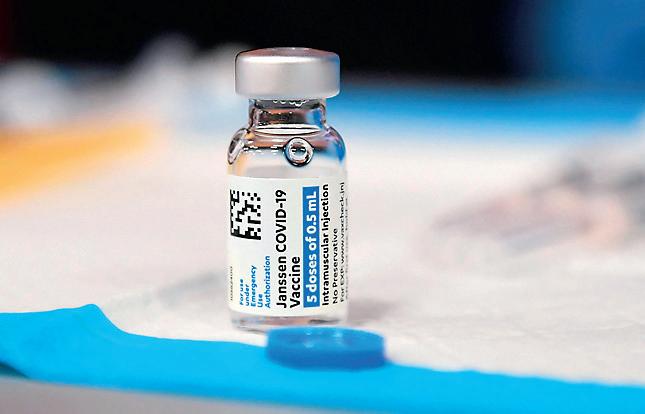
Early in 2021, Snow had a mild bout with the COVID-19 virus. That summer, he tested positive for antibodies. Adding the vaccine in the fall of 2021 may have multiplied the effects of the virus’s spike protein, Snow said. Makis said that it’s a good theory.
But neither Makis nor Snow has found a single study on that. “The research wasn’t done,” Snow said, “because we are all one big research project.”
Snow’s job, flying airplanes, also could help make a spike-protein-infected person “more prone” to a cardiac event, cardiologist Dr. Thomas Levy told The Epoch Times.
He said the spike protein is known to cause inflammation, even in “spotty” areas of the heart. Changes in atmospheric pressure could irritate the inflamed areas, “affecting the conduction system of the heart,” Levy said.
Snow said he also wonders whether his decision to “get it over with, in one shot,” getting the Johnson & Johnson Janssen vaccine, played a role. Three other vaccines on the market call for a two-dose regimen.
Last month, the U.S. Food and Drug Administration renewed the “emergency use authorization” for the Janssen shot. But additional cautions have been added, in light of possible side effects.
Snow said that it irks him to hear government agencies tout the vaccines as “safe and effective” with a low risk of side effects. He said he feels that stories like his are discounted and dismissed and that people who believe they are vaccine-injured are treated like “collateral damage” in a politicized battle over the once-mandated vaccines.
“I felt that I was thrown under the bus and was run over,” he said. “But by the grace of God, I crawled my way out from under the bus, and now I’m going to try to
do what I can to continue on with my life and be productive.”
‘Too Political’ to Discuss For Snow, that includes continuing his advocacy.
“We are hearing more and more about studies showing tens of thousands of people were vaccine-injured, and I feel I
90%
IN ALMOST
PERCENT OF CASES,
need to speak out on behalf of some of them who don’t have a voice,” he said.
“Many people are afraid to say anything, and those who do speak out are often not being heard. I know because I’ve seen friends and acquaintances don’t want to hear these stories; they almost ‘ghost’ you because it’s ‘too political’ to talk about it.”
Snow has encountered medical professionals who won’t explore the topic with him. And no one from American Airlines or the Federal Aviation Administration (FAA) has contacted him to investigate the circumstances of his cardiac arrest. To him, that’s unconscionable.

In an email to The Epoch Times, the FAA said, “We do not discuss individual cases.” The agency repeated its stock answer: “The FAA has seen no credible evidence of aircraft accidents or incapacitations caused by pilots suffering medical complications associated with COVID-19 vaccines.”
Snow said he believes investigations are sorely needed. He noted that US Freedom Flyers (USFF), an aviation advocacy group that connected him with medical and legal experts, has been sounding alarms.
Josh Yoder, USFF president, said reports of pilots with scary symptoms, possibly
vaccine-related, began trickling out in late 2021.
Since then, the trickle has turned into a flood. Such reports number in the hundreds, Yoder said.
“And those hundreds are just the tip of the iceberg; those are just the ones who are brave enough to reach out,” Yoder told The Epoch Times.
He commended Snow for being an example to others. “He has empowered large numbers of airline employees to take a firm stand against threats and coercion from their employers,” Yoder said. “Captain Snow’s willingness to take a stand for truth has created positive impacts that will be archived in history.”
Yoder and Snow both said they think that many government officials and aviation executives fear being held liable for mandating the shots, so they refuse to investigate suspicions that the vaccines may hurt pilots’ health.
One of the few receptive officials, Sen. Ron Johnson (R-Wis.), recently confronted the FAA about Snow’s case and four others. Dissatisfied with the agency’s response, Johnson accused the FAA of ignoring suspected vaccine injuries among pilots.
Snow’s life will never be the same. Gate C21 could be the last gate he will approach as a working pilot.
The FAA, the same agency that deems

the shots safe for pilots, sets pilot health requirements. Snow is concerned that the FAA might deny medical clearance to him. Yet he is somewhat hopeful, considering that the cause of his cardiac arrest remains a mystery.
A battery of tests, including several types of cardiac imaging, revealed no inflammation and no other problems with Snow’s heart.
“The doctors have given no clinical rationalization for why this happened to me,” Snow said. “They say nothing is wrong with my ‘plumbing.’ ... It makes you wonder what these vaccines might be doing to people, long-term.”
For now, Snow remains grounded, on disability from his job at American Airlines. And a medical device is implanted inside his chest, ready to shock his heart if it beats erratically again. Regularly, the device transmits data to his cardiologist. As of April 18, there was no sign of any problem.
Snow, who had planned to retire in five more years, struggles with the premature end of a career he dreamed of since age 7.
In his boyhood, he would gaze into the Texas sky and watch planes crisscrossing from nearby airports and Air Force bases. “I’d see that white line being drawn across the blue and wonder, ‘Where are they going?’” he said. “I always thought, ‘That’s so cool!’”
On April 15, 2022, Snow returned home after a six-day hospital stay. Ever since, he
has kept his trusty suitcase, filled with “pilot stuff,” sitting at the ready on his bedroom floor. Putting it away would feel too much like a final goodbye to aviation, a career he loves deeply.
“I’ve been robbed of something; it’s been taken from me. And that’s a tough nut to crack, to wrap your head around,” he said, especially because he links it to a step he was coerced into taking.
“This wasn’t just an accident. This was, you know, somebody forced you to do something—and the results were dramatic.”
He and his daughter Alexandra lament that he probably can’t sit alongside her as she learns how to become a pilot, too. Someone else might be sitting in the seat where her father belongs.
On the bright side, Snow said: “My daughters are not without their father; my wife is not a widow. I get to spend more time with them, and I’m so grateful for that.”
Snow and his family thank medical professionals and the still-unidentified strangers who rendered aid.
Those people helped give the Snow family a priceless gift: more time together.
“I don’t think it’s still really settled with me that my dad did technically die,” Alexandra Snow said. “Just being able to wake up every morning and still have my dad here with us is a blessing.”
She marveled at the circumstances that came together to help save her father and said, “If any of that had been any different, I don’t think my dad would still be here.”
For all four of the Snows, every day feels more special.
“You know the feeling you’d get as a kid when there would be a snowstorm, and you’d get the day off from school—a snow day? It was like, ‘Oh yeah! All right!’ Well, for me, it’s almost like that every day now,” Snow said.
But among all the days on the calendar, one date will stand out from now on. Snow, who turned 61 in January, intends to mark every April 9 “as a different type of birthday—a rebirth day.”
On this April 9, Snow and his family basked in each other’s company. They shared a steak dinner and a few glasses of wine—a small celebration, courtesy of the mini-miracles that came together a year ago at Gate C21.
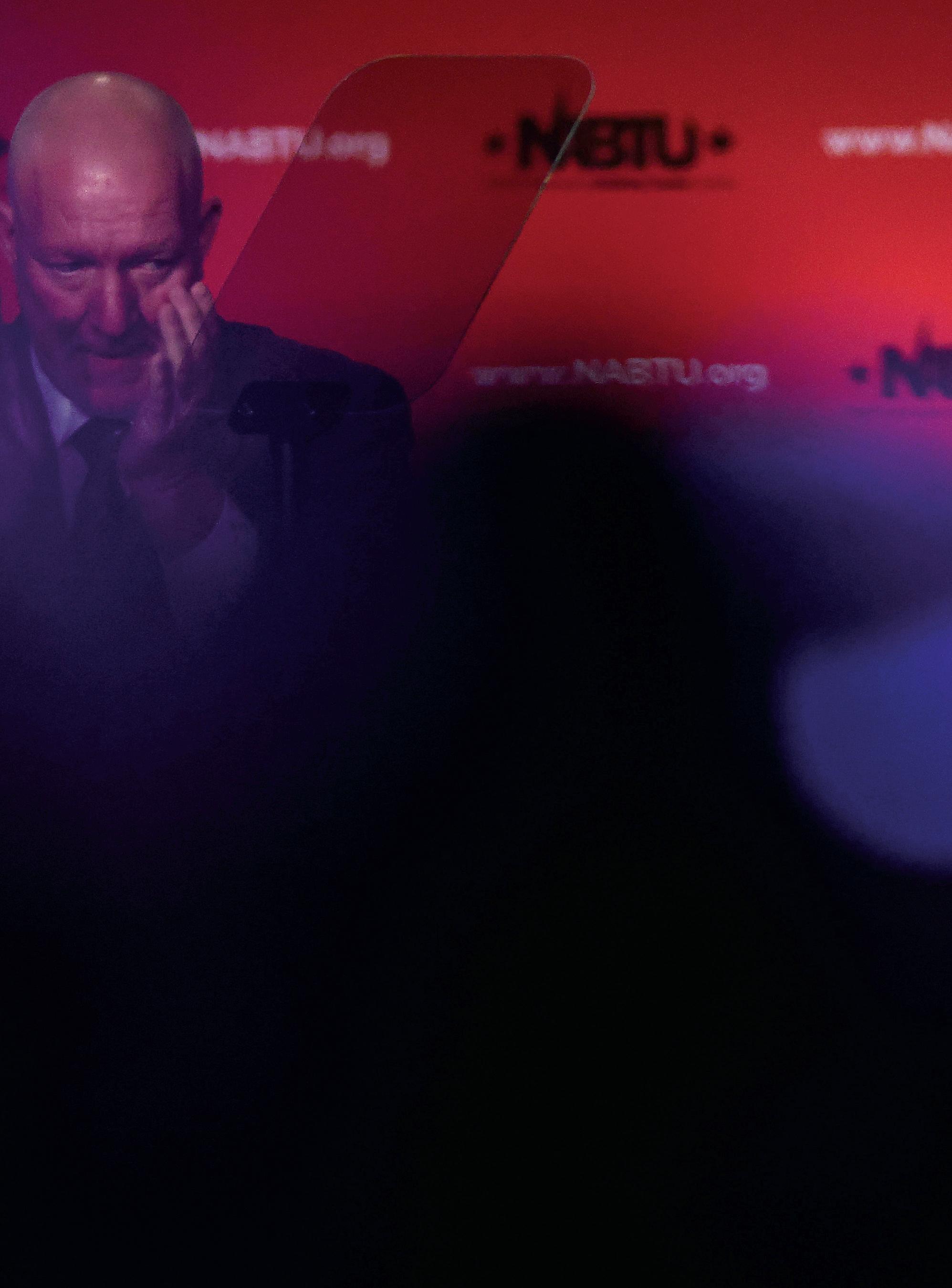
The question is ‘whether, in the years ahead, we have more freedom or less freedom,’ he says
BY JEFF LOUDERBACKPresident Joe Biden addresses the North America’s Building Trades Unions legislative conference in Washington on April 25. Earlier in the day, Biden released a video in which he officially announced his reelection campaign.
 PHOTO BY CHIP SOMODEVILLA/GETTY IMAGES
PHOTO BY CHIP SOMODEVILLA/GETTY IMAGES
36% BIDEN’S APPROVAL rating among voters between the ages of 18 and 29 has dropped to 36 percent, down from 41 percent, since last spring, a poll shows.
45%
IN A ONE-ON-ONE matchup between Biden and Trump, registered voters said they preferred Trump, 45 percent to 40 percent, a poll indicates.
fter months of hints and comments that he would seek a second term, President Joe Biden officially announced his 2024 reelection campaign in a video on April 25, four years to the day after he announced his 2020 presidential bid.
In the video posted early that morning, Biden, 80, said: “The question we are facing is, whether, in the years ahead, we have more freedom or less freedom. More rights or fewer.”
“This is not a time to be complacent. ... That’s why I’m running for reelection,” he said.
“We believe that everyone is equal, that everyone should be given a fair shot to succeed in this country.”
In his video, while showing images of the Jan. 6, 2021, Capitol breach, Biden took aim at Republicans, saying, “Around the country, MAGA extremists are lining up to take on those bedrock freedoms.”
Drawing on the theme of his 2020 election, Biden said: “When I ran for president four years ago, I said we were in a battle for the soul of America. And we still are.
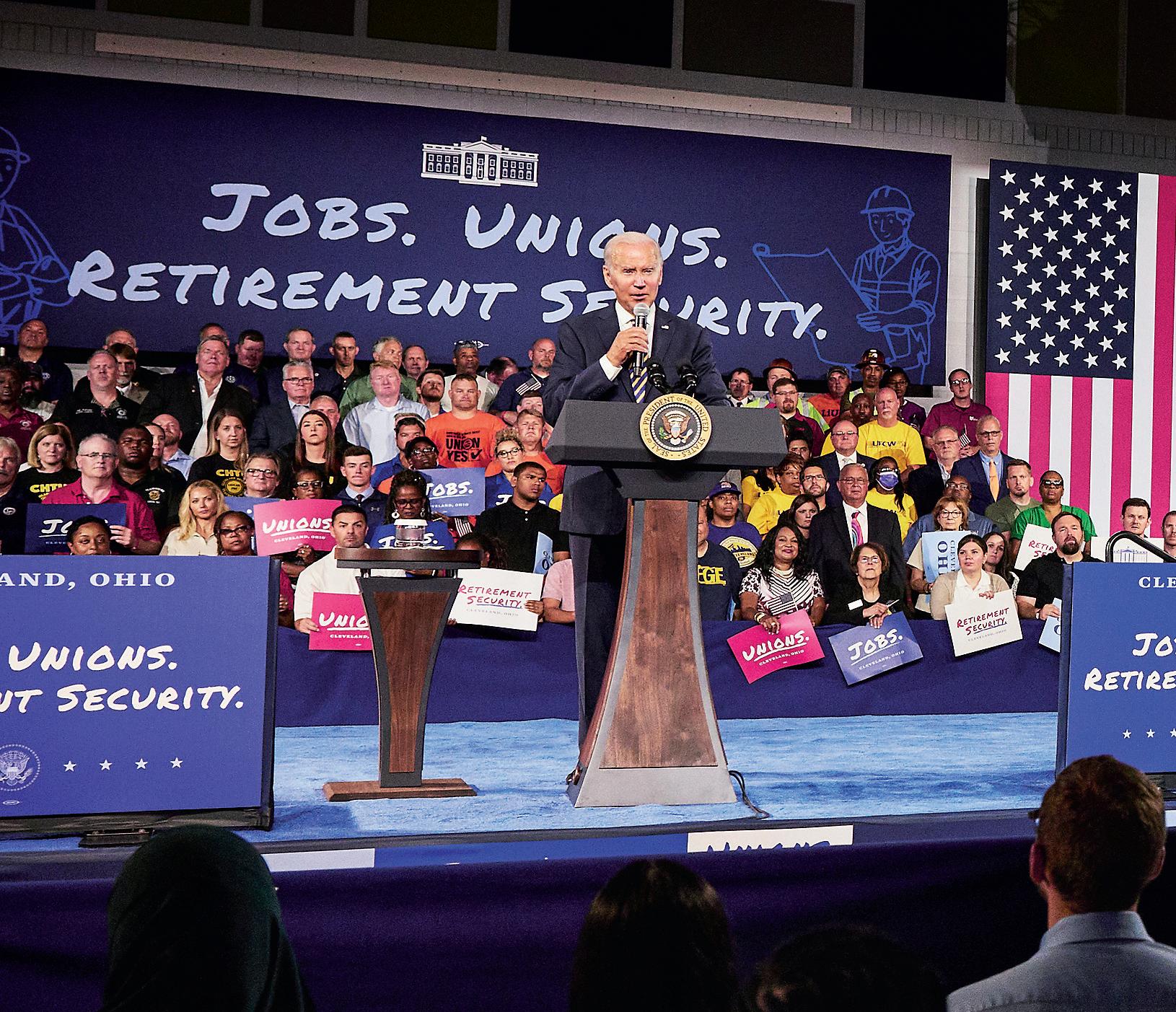
“Every generation of Americans have [sic] faced a moment when they have to defend democracy.”
Biden faces challenges that weren’t present during his first campaign, when he was a former vice president running against incumbent President Donald Trump.
Biden’s handling of the nation’s economy has been a source of concern for many Americans since late 2021 because of stubbornly high inflation and ongoing recession fears.
A legal inquiry continues into Biden’s handling of classified documents from his time as vice president that were discovered at his Wilmington, Delaware, home earlier this year, following the finding of classified materials at
President Joe Biden talks about his administration’s economic agenda at Max S. Hayes High School in Cleveland on July 6, 2022.

the Washington-based Penn Biden Center in November 2022.
The escalating crisis at the U.S.–Mexico border, the Russia–Ukraine war, and communist China’s growing influence and its potential invasion of Taiwan are among the other challenges Biden is facing.
One of his most urgent matters is the debt ceiling standoff with the Republican-controlled House of Representatives.
On April 26, the House narrowly approved legislation introduced by Speaker Kevin McCarthy (R-Calif.) that, if enacted, would increase the nation’s debt ceiling by $1.5 trillion through March 2024, in exchange for a return in discretionary spending to fiscal 2022 levels, among other cuts.
The measure passed 217-215, with four Republicans joining all Democrats in voting no.
The “Limit, Save, Grow Act” of 2023 is intended to ease concerns about a possible default on U.S. obligations and encourage a more permanent resolution of the debt crisis into the election season.
Biden has refused to negotiate with House Republicans over the debt ceiling.
Government spending is expected to be a widely discussed issue in both parties’ primaries and the general election.
Inflation, which reached its post-pandemic peak in June 2022 at 9.1 percent, is now at 5 percent. Yet rising interest rates implemented by the Federal Reserve to combat inflation have increased the risk of a recession, many economists believe.
Biden has approved trillions in spending since taking office. Among the legislation that he proudly publicizes are the $1.9 trillion American
Rescue Plan, the $1.2 trillion Infrastructure Investment and Jobs Act, the $745 billion Inflation Reduction Act, and a $1.7 trillion government spending bill that he signed in December 2022.
Republicans have long blamed that spending for the rise in consumer prices and have said since the 117th Congress that cutting spending would be a top priority for the party if they gained a majority in the House.
Wes Farno, a Republican campaign strategist in Ohio, said he believes that Biden’s messaging that “all is well” will “fall flat” and that Republicans are well-positioned to take back the White House in 2024.
“It’s absurd when he stands up there and claims that the economy is doing well and inflation is under control. Go into a grocery store and tell that to anyone picking something up off the shelves.
“Ronald Reagan once asked, ‘Are you better off today than four years ago?’ Regardless of where they stand politically, very few Americans can say ‘Yes’ to that question,” Farno said.
Polling suggests that many Americans are displeased with Biden’s job performance, prefer former President Donald Trump in a head-to-head matchup, and have concerns about Biden’s age.
A Harvard Youth poll released on April 24 by the Harvard Kennedy School Institute of Politics showed that Biden’s approval rating among voters between the ages of 18 and 29 has dropped to 36 percent from 41 percent since last spring.
An April 20 Harvard–Harris poll indicated that, in a one-on-one matchup between Biden and Trump, registered voters would favor

Trump, 45 percent to 40 percent.
The survey also showed that 67 percent of voters think Biden is “too old” to be president and 56 percent have doubts about his mental fitness for the job.
Biden ran for president in 2020 amid the COVID-19 pandemic and delivered multiple addresses from a TV studio in the basement of his Delaware home.
Aides say that his 2024 campaign will be more vigorous, and his 2023 schedule to date is an example.
Biden gave a speech to the Irish Parliament on April 13, and he mentioned his age while also making the case for a second run.
“I’m at the end of my career, not the beginning,” Biden said. “The only thing I bring to this career after my age—as you can see how old I am—is a little bit of wisdom.”
“I come to the job with more experience than any president in American history. It doesn’t make me better or worse, but it gives me few excuses.”
Democrats who were considered potential contenders for the party’s 2024 presidential nomination—such as California Gov. Gavin Newsom and Illinois Gov. J.B. Pritzker—have publicly expressed support for Biden. Other high-profile Democrats—including New Jersey Gov. Phil Murphy, Michigan Gov. Gretchen Whitmer, and Sen. Elizabeth Warren (D-Mass.)—have also voiced their backing of the president.
“Strength comes from unity. Even if some of these appointees decide to run against the president, at least the Democrats will come to the general election with a robust, transparent, and unified message,” David Carlucci, a former New York state senator who’s a Democratic political strategist, told The Epoch Times.
“This is how Democrats will win. On the other hand, as seen with the appointment of Speaker McCarthy, Republicans struggle immensely with their fringe members.”
During its February meeting, the Democratic National Committee (DNC) unanimously passed a resolution declaring its “full and complete support” for a second term for Biden and Vice President Kamala Harris.
Earlier in April, Biden and the DNC announced that the 2024 national convention would be held in Chicago.
“Running for the president the first time is aspirational. You can make all sorts of big bold promises,” Jen Psaki, Biden’s former press secretary, said on April 23 on her MSNBC show. “Running for reelection is when you actually get your
One of Biden’s most urgent matters is the debt ceiling standoff with the Republicancontrolled House of Representatives. Biden has refused to negotiate with House Republicans.
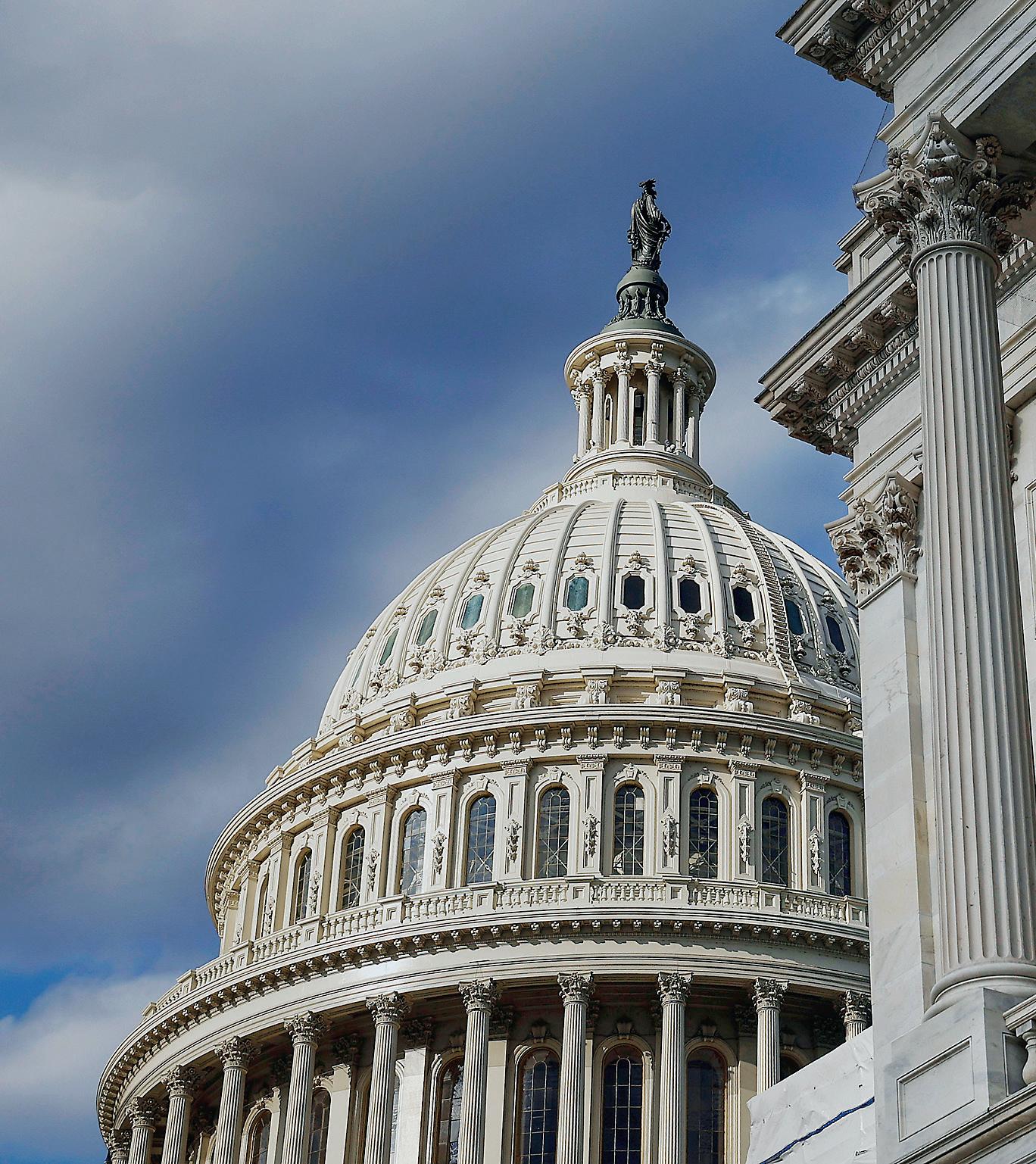
report card from the American people.”
“Part of the case President Biden will make to the public after he announces his reelection campaign is that he needs more time to do more and build on the things he has done during his first term,” Psaki said. “That’s the message: ‘Let me finish the job I started.’”
No Democrat who currently holds an office has entered the 2024 presidential race.
On March 4, self-help author and spiritual adviser Marianne Williamson began her 2024 presidential campaign at Union Station in Washington.
Last week, before an enthusiastic crowd in Boston, Robert F. Kennedy Jr. officially announced his 2024 presidential campaign.
Kennedy, 69, is the son of the late Robert F. Kennedy, the former U.S. attorney general, U.S. senator, and 1968 presidential candidate, and the nephew of the late President John F. Kennedy. He is an attorney, the founder of the advocacy group Children’s Health Defense, and a widely known medical freedom and environmental activist.
“I have known and liked Joe Biden for many years, but I disagree with him profoundly about issues like corporate influence in government, censorship, civil liberties, poverty, corruption, transparency, health policy, and war policy, among others,” Kennedy told The Epoch Times. “I look forward to presenting my views plainly so that the people can decide what kind of America they will live in and debating these issues with President Biden.”
As Kennedy announced his presidential campaign, a USA TODAY/Suffolk University Poll discovered that he quickly generated 14 percent support from respondents who voted for Biden in 2020. Biden received 67 percent backing, and Williamson was third with 5 percent. Another 13 percent were undecided.

“In 2020, Joe Biden received more votes than any other president in U.S. history, yet the poll tells us that those same voters are open to other Democrats to wage a spirited primary,” said David Paleologos, director of the Suffolk University Political Research Center. “Kennedy, although

67% A SURVEY illustrates that 67 percent of voters think Biden is “too old” to be president and 56 percent have doubts about his mental fitness for the job.
70%
A POLL SHOWS that 70 percent of respondents don’t want Biden to seek another term, while 60 percent don’t want Trump to run.
a long shot at this point, starts in double digits and can’t be ignored.”
On April 24, the DNC decided to forgo primary debates. This drew criticism from Kennedy, who said it confirms that the nation’s elections are “rigged.”
“Americans think the entire system is rigged against them,” Kennedy told The Epoch Times. “And if the DNC goes through with this—its plan to not have debates—I think that will serve as ... an unfortunate confirmation to a lot of Americans that the system is indeed rigged.”
If Biden wins the Democratic primary, and Trump prevails in the Republican primary, history will be made in the general election. There has never been a rematch between two candidates in back-to-back U.S. presidential elections.
NBC News released a poll on April 23 that indicated that 70 percent of respondents don’t want Biden to seek another term and 60 percent don’t want Trump to run.
Trump has consistently held a significant advantage over the second most popular candidate, Florida Gov. Ron DeSantis, in the polls. DeSantis has yet to announce whether he is running for president.
Biden can defeat Trump, according to Rep. David Cicilline (D-R.I.).
“People recognized he was the one candidate who could defeat Donald Trump and protect American democracy,” Cicilline said. “It’s still the case.”
U.S. Army soldiers carry ballots and other voting materials in Mosul, Iraq, in this file photo. In the past, most UOCAVA voters were connected to the military. But in the 2020 election, military-affiliates made up only about a third of the total overseas ballot returns.
 PHOTO BY CRIS BOURONCLE/AFP VIA GETTY IMAGES
US ELECTIONS
PHOTO BY CRIS BOURONCLE/AFP VIA GETTY IMAGES
US ELECTIONS
The general voting population in the United States promptly ignores that caveat and runs with the preliminary results. To them, overseas votes are an afterthought.
However, policy changes and a Democratic effort to register international voters have quietly altered this longtime Republican-leaning, mostly military voting bloc into an unpredictable force with the potential for fraud and the power to sway elections.
Voters Who Never Lived in the US
Passed by Congress in 1986, the Uniformed and Overseas Citizens Absentee Voting Act (UOCAVA) allows absentee voting by members of the U.S. military and merchant marine; their family
reliminary election results announced right after an election often include the caveat that officials still need to count the overseas military ballots before finalizing results.members; and U.S. citizens residing outside the United States.
It means that even if they have never lived in the United States and never intend to, people born in other countries to parents who are U.S. citizens are themselves considered U.S. citizens and may vote in U.S. elections. The states that allow voters to register and vote even if they have never lived in that state are listed at the end of this story.
No Longer Mostly Military
But in the 2020 election, 63 percent of UOCAVA ballot returns were nonmilitary; military members and their dependents made up just 37 percent of the total overseas ballot returns, according to data gathered by Verity Vote, a group of citizen volunteers with data research and investigation backgrounds who investigate elections.
Increased Overseas Voting During Pandemic
United States in great numbers.
The Department of State ordered many employees to return home, and to assist them, additional rows of seats were installed on contracted airplanes. As of June 1, 2020, the department had arranged 1,140 flights from 136 countries to bring home 101,386 Americans, a government video describing the effort shows.
IRS records obtained by Verity Vote show at least 805,000 fewer U.S. taxpayers abroad in 2020 than in 2019. By law, citizens abroad must adhere to tax reporting responsibilities.
“Massive repatriation, a sharp reduction in citizens living overseas, and restrictions on traveling to foreign countries, all decreased the number of U.S. citizens eligible to claim UOCAVA privileges,” the Verity Vote report stated.
Yet the number of UOCAVA ballots counted in the United States in 2020 was a record high (913,734) and far more than the UOCAVA ballots (671,243) counted in 2016, according to numbers in a 2020 congressional report by the Federal Voting Assistance Program, a program within the Department of Defense that oversees UOCAVA voting.
Post Card Application by Email
in 2009 by Sen. Chuck Schumer (D-N.Y.), requires all states to accept the Federal Post Card Application as both a voter registration form and an official request for an absentee ballot.
States must accept this card even in the absence of the requester’s proof of identity or citizenship.
An applicant who checks the box indicating that he or she has never lived in the United States isn’t required to provide a Social Security number or a U.S.-issued driver’s license. Such an applicant can still receive an absentee ballot and vote in federal elections.
Instructions on the Federal Post Card Application available online request a U.S. address but read, “You do not need to have any current ties with this address.”
“The applicant must provide a foreign address but can choose to have the ballot delivered via email which renders the foreign address obsolete as a security feature,” the Verity Vote report stated.
An email ballot is printed with a voter’s home computer and mailed in.
“When you email a ballot to somebody, you are eliminating the important verification of delivering a ballot to an address where they say they are,” Heather Honey of Verity Vote said during a recent voter integrity presentation at the Pennsylvania Leadership Conference in Harrisburg.
“If I request a mail ballot in Hershey [Pennsylvania], they’re going to have to mail it to Hershey. If they can’t deliver it to me, the post office is not supposed to forward it. That’s a sort of confirmation that at least it was delivered to that address,” Honey said.
“But if I say I’m in Italy, and I say, ‘Email me the ballot,’ there is no verification that I’m in Italy. There’s no verification that I’m even out of the country. I could be in Harrisburg and request the ballot. So this is a big problem.”
If anyone can get a ballot sent to an email address without verifying their identity, the system, she indicated, is ripe for fraud.
Consider these numbers from the Verity Vote report: The Federal Voting Assistance Program estimated that more than 41,000 UOCAVA ballots were returned from Canada, the largest number from any country, yet the Department of Defense reports fewer than 1,000 U.S.
military personnel stationed in Canada.
Arizona allows UOCAVA voters to return their voted ballots by email, fax, or online portal upload, creating another vulnerability as those ballots are printed and counted in counties.
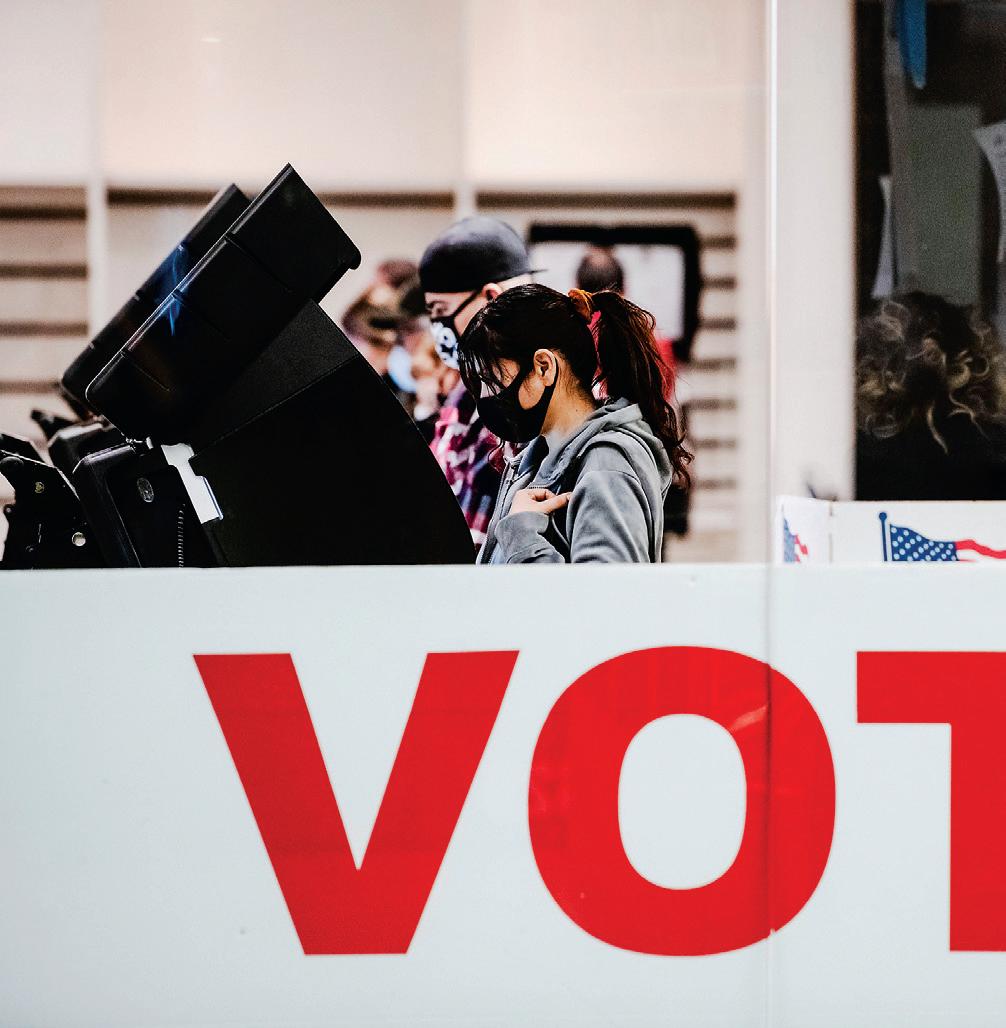
Virginia law doesn’t allow the electronic return of any voted ballots. But in 2020, Virginia reported that 19,809 of the 25,634 nonmilitary UOCAVA ballots were received by email and counted, Verity Vote stated.
The only two partner organizations identified by the Federal Voting Assistance Program are VotefromAbroad.org and the U.S. Vote Foundation, the Verity Vote report stated.
“Vote from Abroad advises people on
how to use a VPN. While this might be helpful in circumstances where foreign IP addresses are blocked by a particular jurisdiction, it also obscures the origin of ballot requests and submissions.”
Both organizations identify as nonpartisan, but the public disclosure on the Vote from Abroad website states that it’s a public service of Democrats Abroad, the “official Democratic Party arm for the 9 million Americans living outside the United States.” The first step in requesting a ballot is to fill out a form on the Vote from Abroad website. Voters share personal data that become accessible to the Democratic Party.
U.S. Vote Foundation’s website states that it isn’t connected with any U.S. government organization but also that it’s partly funded by state and federal re-
search grants. Self-described as a nonprofit, nonpartisan charity, it’s also supported through its provision of voter services, private foundation grants, and individual donations. Foundation grantors have included the following left-leaning organizations: The Pew Charitable Trusts, The Carnegie Corporation of New York, JEHT Foundation, The Democracy Fund, BlackRock, and the Knight Foundation.
In 2009, Pew released a report stating that military voters were being denied their right to vote in 2008 because of voting impediments. The report, funded by JEHT Foundation, was used as justification by Schumer to advocate for electronic delivery of ballots to unverified nonmilitary requestors claiming to be U.S. citizens living overseas, the Verity Vote report claims.
There was plenty of political support for improving military voting. “But in reality, non-military overseas voters
benefited most from the changes—a bait-and-switch,” Verity Vote stated.
The increase in overseas nonmilitary ballots alone is a remarkable anomaly, and it disproportionately benefited Democratic candidates, Verity Vote said.
Most counties don’t keep records of overseas ballots, but a few counties had circumstances that revealed unexpected results in the 2020 presidential election.
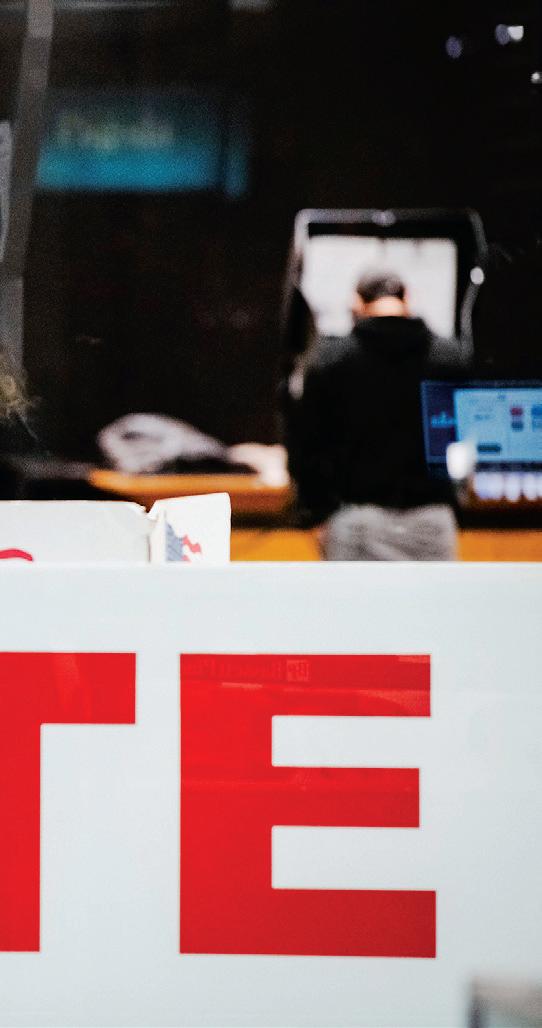
“The only reported full hand recount of electronically returned UOCAVA ballots was conducted in Maricopa County, Arizona. The tally revealed a significant deviation from the razor-thin 50–50 results in the state. The presidential selection on the UOCAVA ballots favored Biden over Trump, 74 percent to 26 percent.”
In Fulton County, Georgia, a hand recount of a batch of 950 UOCAVA ballots had zero votes for Donald Trump and 100 percent for Joe Biden, the Verity Vote report stated.
A poll worker in a Louisiana county reported that 80 percent of UOCAVA ballots were for Biden.
In Cobb County, Georgia, a poll observer challenged the authenticity of the UOCAVA ballots when she realized that 80 to 90 percent were votes for Biden.
A judge of elections in Colorado observed that the UOCAVA ballots were 95 percent for Biden, the report said.
In the city of Richmond, Virginia, a poll worker who hand-tallied about 1,000 ballots showed 85 to 90 percent for Biden.
“The Help America Vote Act requires states to verify the identity of voters prior to accepting ballots in federal elections. Overseas U.S. citizens are subject to the same federal law. The few overseas persons who can claim U.S. citizenship but who have never resided in the U.S. and who have never been issued a Social Security number, should be required to provide a passport number or some other verifiable form of identification to prove identity and eligibility,” the Verity Vote report reads.
“It seems reckless to allow the lowest common denominator, as applied to these citizens who’ve never lived in the U.S., to dictate the level of security utilized to protect the vote.”
In some states, U.S. citizens who were born abroad and have never resided in the United States are eligible to vote absentee. The following states allow these citizens to vote absentee:
• Alaska
• Arizona
• California
• Colorado
• Connecticut
• Delaware
• District of Columbia
• Georgia
• Hawaii
• Illinois
• Iowa
• Kansas
• Kentucky
• Maine
• Massachusetts
• Michigan
• Minnesota
• Montana
• Nebraska
• Nevada
• New Hampshire
• New Jersey
• New Mexico
• New York
• North Carolina
• North Dakota
• Ohio
• Oklahoma
• Oregon
• Rhode Island
• South Carolina
• South Dakota
• Tennessee
• Vermont
• Virginia
• Washington
• West Virginia
• Wisconsin
OF UOCAVA BALLOT returns were nonmilitary in 2020, data show.
63%
Under U.S. law, people born in other countries to parents who are U.S. citizens are themselves considered U.S. citizens and may vote in U.S. elections, even if they have never lived in the United States.

PEOPLE CONGREGATE WITH THEIR families at a hot air balloon festival to celebrate the end of Ramadan, in Wonosobo, Indonesia, on April 23.
 PHOTO BY DEVI RAHMAN/AFP VIA GETTY IMAGES
PHOTO BY DEVI RAHMAN/AFP VIA GETTY IMAGES
As radio host m ark l evin recently noted, when it comes to Democrats and real campaign violations, “there is no justice.” In contrast to the weak charges leveled against former President Donald Trump, Levin provided a series of concrete examples of Democrat campaign violations, including the $719,000 in fines against participants in the 1996 Democratic Party fundraising scandals.
In that scandal, Democratic fundraisers set specific prices for foreign nationals, including those from China and Korea, to make illegal campaign contributions in return for meetings with then-President Bill Clinton and Vice President Al Gore. Foreign individuals and organizations are barred from contributing to federal elections. Those penalized included the Democratic National Committee (DNC), the Clinton–Gore campaign, and roughly two dozen people and corporations acting as conduits for the illegal contributions.
Despite the magnitude of the crimes, the DNC was fined only $115,000 and the Clinton–Gore campaign was fined just $2,000. As was reported at the time, the total in fines would have been significantly higher except that some of the corporations had folded and others were simply shell corporations—dummy operations, with no assets—set up as conduits for money from China, Venezuela, Canada, and other countries.
In some cases, foreigners who would have been subject to fines couldn’t be located and served with papers. In other cases, the individuals pleaded guilty in criminal cases and were already bankrupt. The Federal Election Commission (FEC) decided to drop cases against contributors of more than $3 million in illegal DNC contributions because the respondents were either “out of the country and beyond ... reach, or corporations that are defunct.”
Levin also highlighted fines levied by the FEC against former President Barack Obama’s 2008 campaign—$375,000 in total fines for campaign reporting violations. According to the audit report, Obama’s 2008 presidential campaign failed to properly report almost $2 million of last-minute campaign contributions by refusing to file mandatory

notices for about 1,300 contributions received just before the 2008 presidential election.
Most of the missing 48-hour notices came from a transfer on Oct. 24, 2008, from the Obama Victory Fund, a joint fundraising committee of the Obama campaign and the DNC. Notably, the FEC’s audit report wasn’t released until April 2012, even though it was Obama’s 2008 campaign that was being audited. There were zero repercussions for Obama personally.
Levin is right, of course, and while he provided a litany of other examples, there are even more. In 2008, Obama’s campaign admitted it miscategorized the purpose of an $832,598 payment for get-out-the-vote efforts to Citizens Services Inc., a consulting firm affiliated with the Association of Community Organizations for Reform Now (ACORN).
ACORN was the DNC “community organizing group” that endorsed Obama, who had earlier “acted as one of their lawyers” and had been involved in teaching “community organizing classes” for the organization. ACORN claimed that it was nonpartisan, but its highly questionable voter registration efforts always seemed to focus on groups friendly to Democratic candidates. Amid mounting charges of voter fraud, ACORN became a target for Republicans and finally closed in 2015 under the weight of the charges.
Although ACORN was forced to close its operations, Obama’s campaign made sure to provide funding for DNC-affiliated groups that were directly modeled after ACORN—many of which are active to this day. Obama’s self-described “wingman,” Attorney General Eric Holder, created what came to be known as the DOJ’s Slush Fund, which arose through the establishment of the “Working Group,” which was created in 2012, supposedly as a means of prosecution and punishment for those perceived to be responsible for the financial crisis of 2008.
At the formation of the Working Group, Holder foreshadowed the new direction of the Justice Department (DOJ), saying: “When we find evidence of criminal wrongdoing, we bring criminal prosecutions. When we don’t, we endeavor to use other tools available to us.”
Holder was using the power of the DOJ to punish behavior and activities that
In contrast to Trump indictment, Democratic campaign violations got almost zero repercussions
News Analysis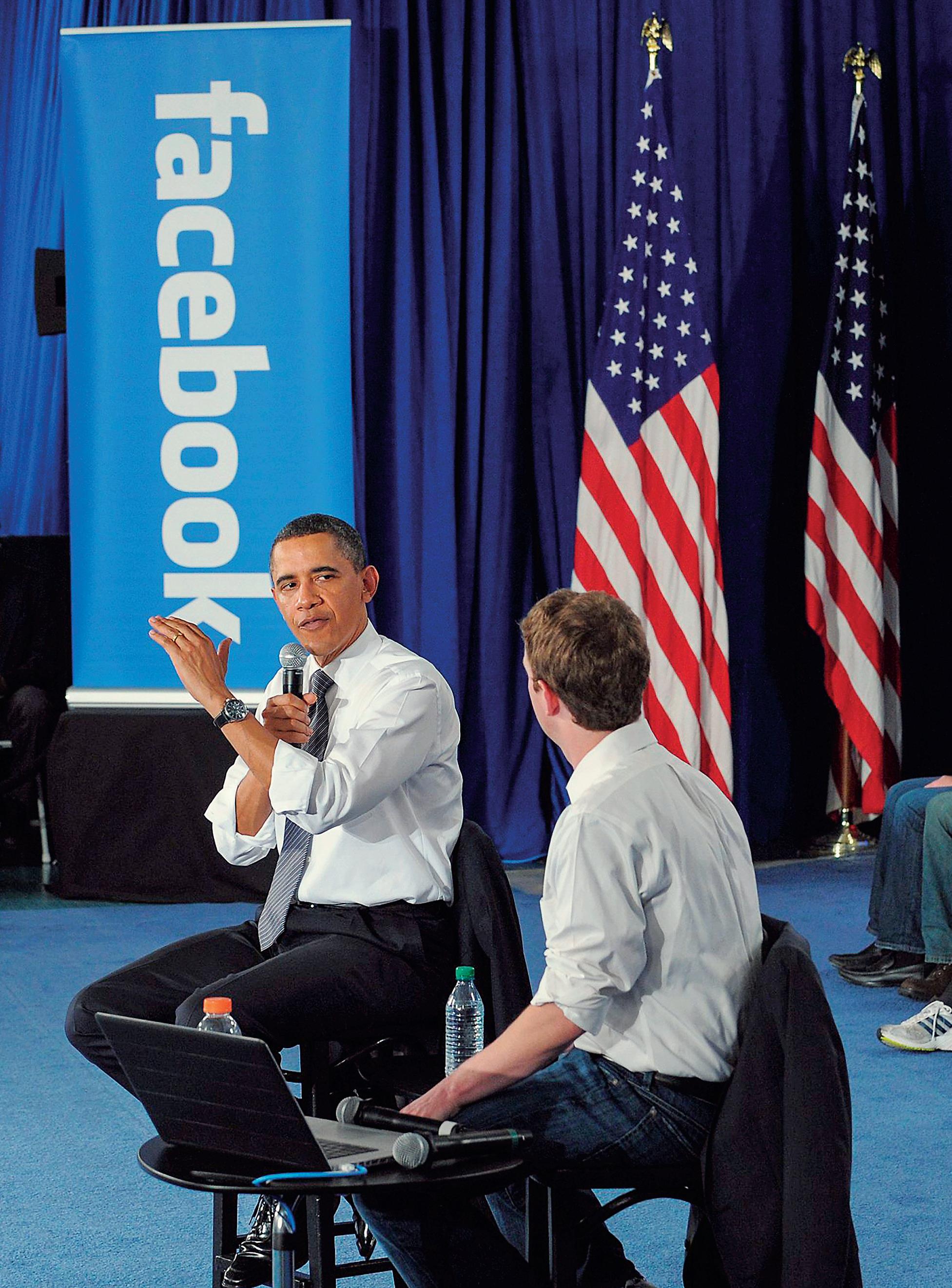 BY JEFF CARLSON
BY JEFF CARLSON
he didn’t like—even though those behaviors weren’t actually illegal.
With the full weight of the DOJ behind it, the Working Group reached multibillion-dollar settlements with virtually every major bank in the United States. In total, $110 billion was collected in fines. According to a congressional committee report, the DOJ was pushing and even requiring settling defendants to donate money to left-wing political activist groups.
The committee found that these “donations” could earn up to double credit against defendants’ overall payment obligations, while credit for direct relief to consumers was merely dollar-for-dollar. The committee also found that the activist groups that stood to gain from these mandatory donations had actually lobbied the DOJ to include them in settlements.
Holder’s DOJ funneled nearly $1 billion in settlement proceeds to fund a variety of left-wing activist groups that included The National Council of La Raza or UnidosUS, The National Urban League, The National Community Reinvestment Coalition, and NeighborWorks America.
These payments, which should have been slated for injured consumers, occurred entirely outside of the congressional appropriations and grant oversight process. And in some cases, DOJ-mandated donations were used to restore funding that Congress had specifically cut.
Some of these funds were even used to pay the interest in Obama’s “settlement” with Iran. Of the $110 billion that was actually collected by the DOJ, only $45 billion was slated for consumer relief. The use of the remainder of the proceeds has never been fully specified. However, it’s clear that many of the left-wing political activist groups that are so prevalent and active today received direct funding from Holder’s DOJ Slush Fund.
Notably, it was also Obama who enlisted the early and willing assistance of social media companies. Facebook CEO Mark Zuckerberg infamously privatized elements of the 2020 presidential election when he sent nearly half a billion dollars to local election boards in key states to turn out likely Democratic voters.

To put that into perspective, Zuckerberg alone spent almost as much
money funding government election offices as the entire federal government spent on the 2020 election. Zuckerberg’s payments were supposedly made to fill so-called funding gaps from the federal government, but the reality is that the so-called Zuckerbucks were distributed on a highly partisan basis with the goal of electing Joe Biden and other Democrats.
Zuckerberg essentially mounted a private takeover of government election offices, which affected all of the key states that helped Biden “win” the election. In Wisconsin, the Zuckerbucks payments were later found to have violated bribery laws. A study also found that without those payments, Trump would have prevailed in Wisconsin.
Facebook later confirmed that it also
provided the Biden White House with censorship assistance routinely on a variety of crucial issues. Zuckerberg also acknowledged that Facebook censored the Hunter Biden laptop story, a story that was entirely true and accurate, because of warnings they had received from the FBI. To make matters even worse, the FBI knew when they “warned” Facebook that the laptop story was real because the bureau had the laptop in its possession since at least December 2019.
As noted earlier, despite the efforts of Zuckerberg and Facebook on behalf of Biden, the collusion between government officials and Big Tech didn’t start with Biden. It goes back to at least 2012, when Facebook shared its user data with the Obama campaign.
On Feb. 17, 2012, the Guardian ran a
story headlined Obama, Facebook and the Power of Friendship: the 2012 Data Election. The article noted that Obama’s reelection team was building a vast digital data operation that “for the first time combined a unified database on millions of Americans with the power of Facebook to target individual voters to a degree never achieved before.”
The Guardian breathlessly wrote that “at the core is a single beating heart–a unified computer database that gathers and refines information on millions of committed and potential Obama voters.”

At the time, the reaction to the news was glowing acclaim for the sophistication of Obama’s digital campaign. But the reality of the situation was simple. Obama’s election team apparently had full access to Facebook’s data in 2012, access that wasn’t—and wouldn’t have been—granted to conservatives. Nor is this mere hyperbole.
In 2018, Facebook faced a huge political backlash because it was reported that Cambridge Analytica, a political data firm with links to Trump’s 2016 campaign, was able to harvest private data from Facebook profiles without the social network alerting those whose information was taken. Never mind that the Trump campaign never used the data in question from Cambridge, relying solely on the Republican National Committee (RNC) database once Trump became the GOP nominee.
Amid political uproar from the left, Facebook immediately suspended Cambridge Analytica for scraping the data from Facebook. But the political firm was hardly the only one doing so. In a surprising bout of honesty, The Washington Post rightly noted that thousands of other developers—along with political consultants from Obama’s 2012 presidential campaign—also siphoned huge amounts of data about users and their friends, developing deep understandings of people’s relationships and preferences.
As the article stated, any time people used Facebook’s log-in button to sign on to the campaign’s website, the Obama data scientists were able to access their profile and their friends’ information. That allowed them to chart the closeness of people’s relationships and make estimates about which people would be most likely to influence other people in their network to vote.
$2
Former President Barack Obama’s 2008 presidential campaign failed to properly report almost $2 million worth of last-minute campaign contributions.
“We ingested the entire U.S. social graph,” Davidsen said in an interview.
“We would ask permission to basically scrape your profile, and also scrape your friends, basically anything that was available to scrape. We scraped it all.”
Davidsen expanded on the situation in a series of posts on Twitter, writing, “Facebook was surprised we were able to suck out the whole social graph, but they didn’t stop us once they realized that was what we were doing.”
At the very end of the article, the Post revisited the assistance that Facebook had previously provided to Obama’s 2012 digital campaign, noting that in 2011, Carol Davidsen, director of data integration and media analytics for Obama for America, built a database of every U.S. voter using the same Facebook developer tool used by Cambridge.
Davidsen also highlighted the favoritism that Facebook gave to Obama’s campaign, writing, “[Facebook] came to office in the days following election recruiting & were very candid that they allowed us to do things they wouldn’t have allowed someone else to do because they were on our side.”
This raises an important question. If Facebook gave the Obama campaign access to valuable data worth millions of dollars to bolster Obama’s chances of winning the election, why wasn’t it counted as in-kind political contributions by the Obama campaign?
The Justice Department under then-U.S. Attorney General Eric Holder funneled nearly $1 billion in settlement proceeds to fund a variety of left-wing activist groups.
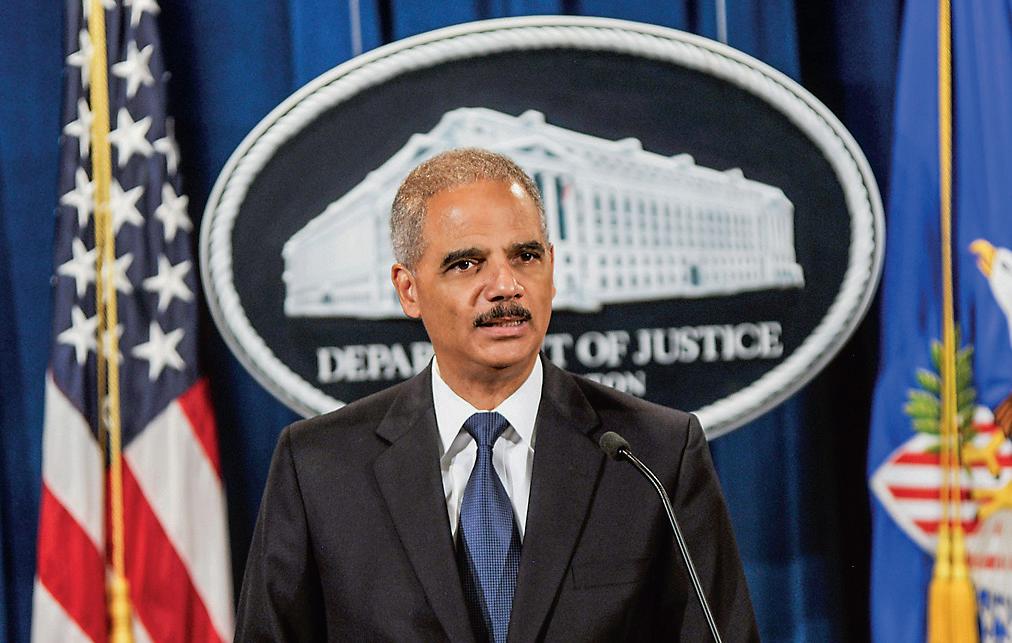

An Ohio EPA Emergency Response personnel looks for signs of fish in the water of Leslie Run creek to check for chemicals that have settled at the bottom following the train derailment in East Palestine, Ohio, on Feb. 20.
 PHOTO BY MICHAEL SWENSEN/GETTY IMAGES
PHOTO BY MICHAEL SWENSEN/GETTY IMAGES
East palestine, ohio—Until Feb. 3, most Americans had never heard of East Palestine, a village of 4,700 residents in eastern Ohio about a mile from the Pennsylvania border. Most people couldn’t even accurately pronounce its name, lifelong resident Gregory Mascher said.

“East Pali-steen, not East Pali-stine,” he said with a grin.
When people in this close-knit community woke up on Feb. 3, they didn’t know that life would abruptly change that evening when a 151-car freight train operated by Norfolk Southern derailed.
Eleven of the 38 cars that derailed contained hazardous chemicals, according to the National Transportation Safety Board (NTSB).
Fears escalated in the immediate aftermath of the wreck. Seeking to avoid an explosion that officials claimed would send shrapnel flying around, vinyl chloride was intentionally released
and burned on Feb. 6, sending a massive cloud of black smoke into the sky that could be seen for miles around.
The burn triggered questions about the potential health effects on the residents of East Palestine.
Ohio Gov. Mike DeWine lifted an evacuation order on Feb. 8, saying it was safe for residents to return to their homes.
Officials from federal and state agencies have repeatedly said tests show that the air and water are safe in East Palestine and surrounding communities.
However, residents are still reporting headaches, vomiting, burning eyes, rashes, and other ailments.
Gregory Mascher is married to Traci Mascher, who’s also a lifelong East Palestine resident. They live downtown, within a mile of the derailment site.
Since the disaster, they’ve stayed at friends’ and family members’ homes in West Virginia and Virginia, hoping
that there will be a time when they feel like it’s safe to return for good instead of just a check-in at their house.
“I loved that few people could point to East Palestine on a map. I loved life in this tiny little village before the derailment. Now, the landscape has dramatically changed with all the government agencies, elected officials, reporters, and cleanup crews here,” Gregory Mascher said.
“Perhaps there will be a time when everyone leaves and East Palestine gets back to being a place where only locals walk and drive on the streets, but will this ever be the safe place it was before Feb. 3? There is no definite answer to that question.”
On April 15, a Norfolk Southern statement reported that the company had completed its excavation of the impacted soil beneath the derailment site’s south track and will replace the track in the upcoming days.
Norfolk Southern followed U.S. Envi-
ronmental Protection Agency protocol to determine that all contaminated soil has been fully removed from the site, according to the statement.
Like many East Palestine residents affected by the aftermath, Gregory Mascher has little interest in legislative actions, comments from government officials, and promises from Norfolk Southern and its CEO, Alan Shaw.


“All of that is understandably news that is reported for people to read and see, and it makes sense that a disaster of this level would cause so much attention at the state and federal levels, but for those of us here, we are just thinking about today and what might happen tomorrow, months from now, and years from now,” he said.

“Is it safe to take a shower? Is it safe for kids to play in the creeks, and is it safe to eat vegetables grown in our gardens?
“Elected officials, government offi-
cials, reporters, activists, Norfolk Southern’s CEO—they all get to go home after being here. This is our home, and we don’t know if it’s safe to stay.”
Before the derailment, Gregory Mascher coached his granddaughter’s basketball team, and their house was a popular gathering spot for their granddaughters and neighborhood children playing in the backyard and riding bikes.
“Our eight grandchildren have grown up together and are like sisters, but my daughter and her husband are thinking about moving out of town because they are afraid to stay,” he said.
“We hope to return, but we just don’t know. It’s not a good feeling waking up in the morning and not knowing whether your home is safe.”
His family owned a jewelry store in East Palestine for decades, and he managed a grocery store when he met Traci Mascher.
“I saw him, and 36 years later, here we are,” Traci Mascher said with a smile in
(Clockwise from left) Statues of a bulldog, which is the high school mascot, are situated throughout the community of East Palestine, located in eastern Ohio. Sen. J.D. Vance (R-Ohio), in stills from a video taken during his visit to Leslie Run creek on Feb. 16. The gateway to East Palestine near the train derailment site has been limited to restricted traffic since the Feb. 3 accident. A clean-up crew member works at the site of the Norfolk Southern Railroad derailment on Feb. 14. Toxic chemicals float on the surface of Leslie Run creek after the derailment on Feb. 25.
the living room of their East Palestine home.
They dated and eventually settled in East Palestine for the long term in a “place where you leave your doors unlocked and everyone looks out for each other’s families,” she said.
The Maschers said they’re positive people and that they would like to think that East Palestine can rebound and return to the inviting hometown it was before Feb. 3.

“Many people here would love it if that happened, but if people move away and new people don’t move in, businesses won’t survive,” Gregory Mascher said.
“And if businesses don’t survive, and people are hesitant to move here because of the stigma and not knowing if it is safe, then the village won’t be the way it was.
“Understandably, people are scared to death to stay here because they don’t have the peace of mind they had before the derailment.”
Many people in East Palestine share Mascher’s concerns.
Sil Caggiano, a hazardous materials specialist who lives in the area, said, “There’s a lot of ‘what ifs,’ and we’re going to be looking at this thing five, 10, 15, 20 years down the line and wondering.
“Gee, cancer clusters could pop up. You know, well water could go bad.”
Jami Cozza has lived in East Palestine for 46 years and has 47 family members who live in the community.
Cozza’s home is located about a mile away from the derailment site alongside Sulphur Run creek, which is one of the contaminated waterways in the area.
When officials alerted locals of the planned release of toxic chemicals from the derailed railcars, she evacuated with her family.
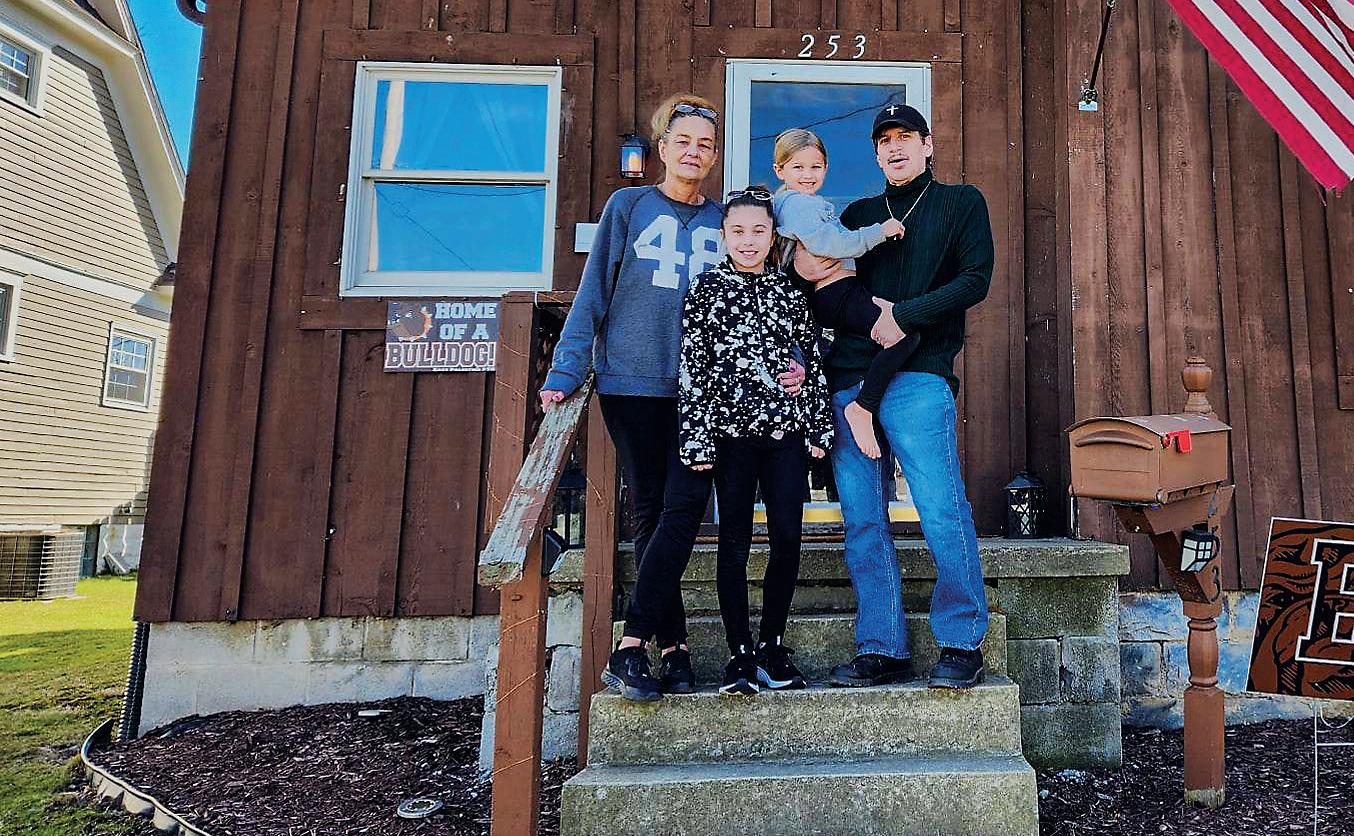
Cozza told The Epoch Times that Norfolk Southern initially conducted air testing and told her it was safe to return home.
“I asked for additional water and soil testing, and [Norfolk Southern] agreed and sent a senior toxicologist,” she said. “He told me that my house was not safe and that I shouldn’t return.
“I’m vocal, and had I not used my voice and thrown a fit, I would be sitting in that house with my 3-year-old daughter
breathing the toxic chemicals.
“How many children—how many people—are inside their homes and are in danger? How can any of us trust the railroad? I don’t trust them.
“It’s not about the money. It’s about our house. It’s about our town. This is our home. This is our life, and we are not getting the help that we need.
“Everyone deserves to live and sleep in a home that is safe from toxic chemicals.”
Since they evacuated, Cozza and her family have lived in hotels and an Air BnB.
“I realized last week that this is going
to be the rest of my life,” Cozza said.
“This is when I should be sitting on my porch, sipping coffee, watching my grandkids play. I’m going to be fighting this until the day I die. This is my new reality.
“I pray that we’re the biggest comeback story in history, but in my heart, I don’t feel like my daughter will ever get to play in that creek like I did when I was a kid.”
East Palestine resident Misti Allison testified at a U.S. Senate Committee on Commerce, Science, and Transportation hearing in March addressing the derailment and Norfolk Southern’s safety record.
“This is about people. This is about a community that no one had ever heard of before becoming ground zero and a small town being destroyed overnight,” she told lawmakers.
“Everyone who lives in East Palestine is aware of the trains that pass by, but we’ve never really thought about them. Now, we can’t think about anything else.
“My 7-year-old has asked me if he is going to die from living in his own home. What do I tell him?”
Allison said that the accident “has resulted in tumbling home values and financial strain for the village.”
“This preventable accident has put a
“THIS IS OUR HOME, AND WE DON’T KNOW IF IT’S SAFE TO STAY.”
Gregory Mascher, local
scarlet letter on our town. People don’t want to come here,” she said.
“Norfolk Southern has repeatedly said that they are going to make it right, and so it’s really like what is the litmus test for that, and who gets to decide what is right?”
“These aren’t million dollar homes we have, but this is the home that means a million dollars to me because it is where we lay out in the grass and sunbathe, it is where we grow our garden, it is where my cats play. It is where our lives are lived, and we like life here,” Helpy said.
Three dozen people and five businesses outside East Palestine have also filed legal action.
The lawsuits were filed in federal court, and U.S. District Judge Benita Pearson ordered that the cases be consolidated to streamline proceedings.
‘There’s
There’ Northeast Ohio real estate agents have admitted that selling a house in East Palestine is difficult.
“How are they going to sell? There’s a stigma there,” said Marlin Palich, a Berkshire Hathaway HomeServices agent in Columbiana County, where East Palestine is located.
Michael Stevens, board president for the Youngstown Columbiana Association of Realtors, told a northeast Ohio newspaper that home sales will suffer until remediation is successfully completed.
Uncertainty about the short- and long-term effects has left homebuyers afraid, Stevens said.
Jessica Helpy
Jessica Helpy grew up in East Palestine, and she lived in the village a short walk from her parents’ house when the derailment happened.
The mother of two loved her Cape Codstyle home, which was surrounded by flowers during the warmer months.
Helpy used to live in northern Kentucky, but a house fire caused her to return to East Palestine a few years ago.
After the crash and the release and burn of the vinyl chloride, Helpy and her children evacuated. Upon their return, they experienced health problems, she said.
“One of my kids was throwing up with an extreme headache on the way to school. Both of my kids have felt emotional distress because they have been uprooted from their home and there is no comfortable routine,” Helpy said.
“I had rashes on my arms just from going back inside my house.”
She told The Epoch Times a few weeks after the derailment that “most people here don’t have a lot of savings, and really, when you think about it, how many people anywhere could afford to suddenly pick up and leave their home without having financial challenges?”
Days after the interview, she left her home again and stayed in a hotel before deciding to return to northern Kentucky to live with a family member until she can find another home of her own.
“Everybody wants to return to normal because that’s comfortable, but what’s not comfortable are the potential effects, five years and 10 years down the line,” Helpy said.
“Will there be a group of people getting together for a lawsuit saying we all have the same aggressive cancer that is directly associated to the chemicals that were spilled?
“Local, state, and federal government agencies can tell us that everything is safe, but years down the road when people have life-threatening health problems, they will say, ‘We’re sorry,’ but that won’t help the people whose lives are lost.
“I didn’t want to leave. I love East Palestine, but for the safety of me and my kids, I felt we had to leave.”
On April 18, Shaw testified before an Ohio Senate rail safety panel and mirrored remarks he has delivered at several other federal and state legislative hearings.
“I am deeply sorry for the impact this derailment has had on the people in the region. I am determined to make it right,” he said. “We are making progress every day as we clean the site safely, thoroughly, and with urgency.”
According to Shaw, Norfolk Southern has earmarked more than $30 million to support East Palestine’s residents, community organizations, and first responders—$13 million of that is intended to help more than 7,600 families in the region.
As of early April, 31 lawsuits representing about 11 East Palestine residents and approximately 12 businesses in the village had been filed since the derailment occurred.
Pearson’s ruling doesn’t affect lawsuits filed by the Ohio Attorney General’s Office and the U.S. Department of Justice against Norfolk Southern over environmental damage and other issues caused by the derailment.
Multiple federal and state railway safety bills have been introduced since Feb. 3.
Ohio U.S. Sens. J.D. Vance, a Republican, and Sherrod Brown, a Democrat, have frequently visited East Palestine and have conducted multiple media interviews.
Vance and Brown crafted the Railway Safety Act of 2023, one of the bills designed to address the rash of derailments by Norfolk Southern and other railroad operators.
The NTSB and the Federal Railroad Administration continue to investigate the East Palestine derailment.
Secretary of Transportation Pete Buttigieg was widely criticized for not publicly acknowledging the disaster for 10 days and then visiting the village only after former President Donald Trump announced his own trip to the village.
President Joe Biden has issued numerous federal disaster declarations since Feb. 3.
He visited Rolling Fork, Mississippi, after that town was destroyed by a tornado, among other disaster sites, but he has yet to appear in East Palestine.
Norfolk Southern awaits the final NTSB report, Shaw said. The company is focused on the long-term needs of residents, such as health care, real estate value recuperation, and water monitoring, he said.
“We’re going to do more than the norm on the environmental remediation, we’re going to do more than the norm on the community response, and I am personally going to be more involved than the norm,” he testified on April 18.
“You have my personal commitment that we’ll get the job done and help this community thrive.”
WOMAN WEARING TRADITIONAL ANDALUSIAN dresses stand on Plaza de España in Seville, Spain, on April 24. The dresses, known as trajes de flamenca or de gitana, are known for their colorfulness and elegance and are traditionally worn for festivals.
 PHOTO BY JORGE GUERRERO/AFP VIA GETTY IMAGES
PHOTO BY JORGE GUERRERO/AFP VIA GETTY IMAGES

A nurse waits for her next COVID19 case to be brought from the emergency room shortly after a deceased patient was removed from the same intensive care unit room, at Asante Three Rivers Medical Center in Grants Pass, Ore., on Sept. 9, 2021.
 PHOTO BY NATHAN HOWARD/GETTY IMAGES
HEALTH CARE
PHOTO BY NATHAN HOWARD/GETTY IMAGES
HEALTH CARE
He told The Epoch Times that nurses were beside him and his wife throughout their ordeal. Nurses were beside them during the birth of the child they knew wouldn’t survive. Nurses were beside them as they grieved in the otherwise sterile hospital environment.
They were beside them through it all.
“I knew what kind of medicine I wanted to practice,” Cuesta said. “That’s the hands-on that I wanted.”
According to recent statistics, many nurses, perhaps the very nurses who inspired Cuesta, are now burned out, fed up, and ready to quit.
A May 2021 survey of nurses by Vivian Health—an employment service for health care professionals—paints a bleak picture. Vivian surveyed 1,273 nurses across all 50 states and disciplines one year into the pandemic.
Fifty-three percent reported pessi-
ay cUesta grew Up planning to go to medical school. Then, in 2000, his premature infant died at just two weeks old, and Cuesta’s vision for the future was realigned.mism about the future of health care in the United States. Twenty percent said they were optimistic, and 27 percent weren’t sure.
“Nearly three-fourths report hospital morale has gotten worse in their hospital or health care facility since this time last year,” according to the Vivian report.
Cuesta earned his registered nursing (RN) degree in 2005 and is now working to become a nurse practitioner. Cuesta loves his work and plans to do it for as long as possible. According to experts, he’s in the minority. Cuesta agrees with that assessment.
“A lot of (nurses) just said, ‘We’re going to retire early,’” Cuesta said.
Burnout a Major Issue
As people locked down and worked remotely early in the pandemic, health care workers put in overtime and downplayed concerns about spreading the illness to their friends and families, Cuesta said.
According to the 2021 Vivian survey, 83 percent of respondents felt that their mental health had been affected by pandemic-related stress. Forty-three percent felt that their employers didn’t address their mental health concerns.
Ronnie Cubley, who has been a nurse for almost 30 years, says that many of his fellow nursing veterans are just tired.
“Staff desperately need work–life balance and won’t stay without it,” Cubley wrote in an email to The Epoch Times. “Throughout the U.S., many nurses are doing accelerated retirement.”
Cuesta said the issue extends beyond the physical demands of increased hours. He said that for most nurses, the intangible rewards of nursing are just as important as the paycheck. But as overtime pay increased, the more abstract rewards diminished. Left in their place was the feeling that they might not be doing enough.
Cuesta said it’s common for him to see his patients in the grocery store or elsewhere. Helping them through some of the more challenging experiences of their lives creates a lasting bond.
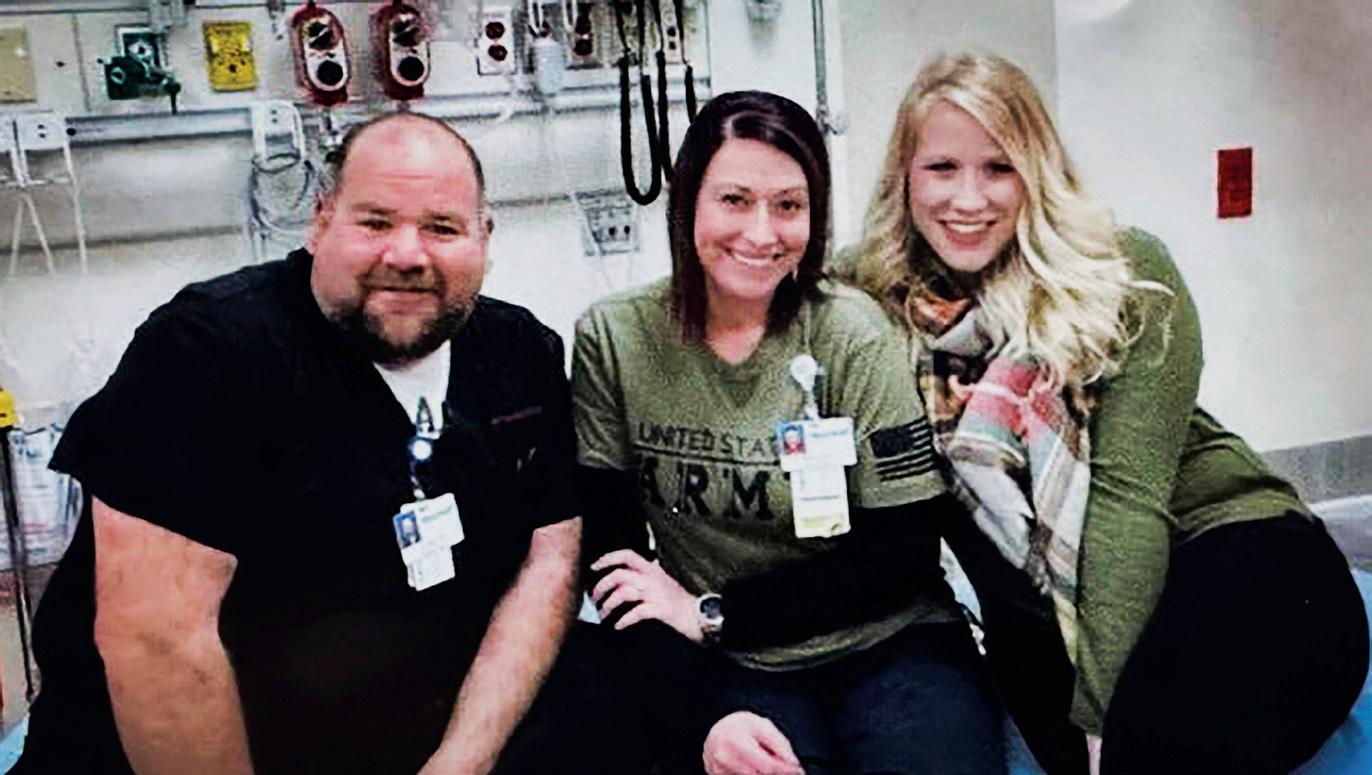
“It’s very rewarding. It’s nice to see people in Walmart who want to give you a hug. That’s why I do it,” Cuesta said.
“When you’re taking care of your neighbors, you want to do a good job.”
But when a nurse runs from one bed to the next with little time between, it’s easy to begin feeling as if they are short-changing those neighbors.
“It really makes it more difficult to provide good quality, consistent care,” Cuesta said.
Cuesta’s concerns are well-founded, according to a New England Journal of Medicine report.
In March 2011, the journal published a study on the effects of insufficient nurse staffing on patient mortality. The study was done by a team led by Jack Needleman, a professor in the Department of Health Policy and Management at the University of California–Los Angeles.
According to the article, the mortality risk for patients in understaffed units was about 6 percent higher than in fully staffed units. Researchers also found that mortality risk increased when a nurse’s workload increased because of high patient turnover.
Cubley expressed the same concerns as Cuesta, saying he has personally seen the effects of the pandemic.
“So many nurses left the profession during the pandemic because of burnout with overwhelming stress caused by excessive workloads,” Cubley said.
But not all nurses left the profession; some just quit their jobs. The increased pressures on work and family life drove many nurses to find higher-paying opportunities. Many became travel nurses.
Travel nurses are registered nurses— those with a bachelor’s degree in nursing, an associate’s degree in nursing, or a diploma from an approved nursing program—who work for staffing agencies and temporarily fill vacant positions. Travel jobs are popular because
they usually pay more. The nurses can offer the bedside care they love, while avoiding much of the administrative work that a full-time nurse at a hospital must do.
According to NursingProcess.org, travel nurses can make $32 to $86 per hour, averaging $56. Most positions include a living stipend, and some cover other expenses. During the pandemic, the average travel nurse’s pay leaped into triple digits, luring many nurses into that field.
According to the U.S. Bureau of Labor Statistics, the national average salary for registered nurses is $77,600 annually, or about $37 per hour.
Many staff nurses were upset with hospital administrators who paid high rates for temporary travel nurses instead of hiring local nurses or paying existing nurses more.
According to the Vivian survey, 78 percent of respondents said their job search priorities changed. If they would give up aspects of the job they loved, they wanted at least to be compensated. Sixty-six percent of respondents ranked pay as the most important factor.
“Eventually, at the end of the day, we have to take care of our families,” Cuesta said.
But compensation is only one issue, and administrators say compensation will work itself out through supply and demand market forces. Another, more crucial, problem is on the horizon, experts have said.
The Bureau of Labor Statistics (BLS) projects the registered nursing workforce will grow by 6 percent in the next 10 years, to 3.3 million in 2031 from 3.1 million in 2021. While that’s an increase of 195,400 nurses, the BLS expects the demand for nurses to increase to more than 203,000 annually.
Generally, this demand would be met by nursing programs at colleges and vocational schools. However, nursing schools only turn out a fraction of the new nurses needed.
from nursing schools each year because schools reach enrollment capacity,” Rossetter said in his statement.
Simply put, the United States needs more nursing instructors.
According to the AACN, the average nursing instructor earns about $65,000 annually, which is less than a working nurse brings in. With most registered nurses being older than 50, a wave of retiring nurses will take their experience with them.
• 53% - Pessimistic
• 20% - Optimistic
• 27% - Not sure
83% OF NURSES FELT THEIR mental health had been affected by pandemicrelated stress, a survey shows.
But that’s not because no one wants to be a nurse, Rossetter says.
“Annual data show that thousands of qualified applicants are turned away
As baby boomers retire, health care providers expect continued growth in the demand for nurses that younger, inexperienced nurses will only partially meet.
Cuesta said that when he started his career, some of the most important lessons he learned came on the job from experienced nurses. He said he has tried to follow that example by teaching the younger nurses he encounters. But, just as patient care is more rushed, increases in workload will make it harder to mentor new nurses.
Cuesta said he and his colleagues are concerned the current situation could
result in an experience deficit.
Sarah Szanton, the dean of the Johns Hopkins University School of Nursing in Baltimore, told the U.S. House Committee on Health, Education, Labor, and Pensions in February that the situation is dire but some things can be done.

“Our nation is perilously short of nurses,” she told the committee. “The average age of registered nurses is 54. We need people to become new nurses, and we need to retain current nurses.”
Szanton said the Future Advancement of Academic Nursing (FAAN) Act, introduced in the 117th Congress, would go a long way toward solving these problems.
The FAAN Act would authorize the Health Resources and Services Administration to award grants to nursing schools to increase their capacity to respond to public health emergencies and otherwise enhance nursing education programs. The FAAN Act would prioritize programs at historically black colleges and universities and other minority-centered schools.
Testifying before the same committee, Dr. Leonardo Seoane, chief academic officer for Ochsner Health in New Orleans, agreed that the legislation would be beneficial.
He said his organization had 1,200 open positions, including physician and nursing jobs, and their staffing costs had increased 900 percent during the pandemic. He said Ochsner is exploring partnerships with universities and medical schools to form apprenticeship programs to recruit and train new medical staff.
“But to scale them, we need support from our universities; we need support from our community colleges; we need support from our governments. I do think it’s a partnership,” Seoane told the committee.
Cubley and Cuesta said that such programs can help if they are correctly implemented, and soon. Cubley says the health care system can’t continue to rely on temporary staff and overtime pay.
“As a nation, we must invest in the nursing workforce beyond Band-Aid solutions.”

Falun Gong practitioners practice collectively at Tianhe Stadium in Guangzhou, Guangdong Province, China, in 1998.
 By Eva Fu
By Eva Fu
Thousands gather to call for an end to the CCP’s ongoing brutal persecution campaign against Falun Gong
New york t wenty-four years ago, thousands of Chinese citizens gathered outside of Zhongnanhai, the Chinese Communist Party’s (CCP’s) headquarters in the heart of Beijing.
They were Falun Gong practitioners, and they were there to peacefully call on the communist regime to end the harassment and suppression of their peers by local authorities. Less than three months later, the regime would start an all-out persecution campaign against the spiritual practice.
On April 23, in the Flushing neighborhood of New York, about 4,000 people took part in a march to remember the historic appeal at Zhongnanhai on April 25, 1999, and to call for an end to the CCP’s ongoing persecution of Falun Gong.
One participant was Elsie He, a New York resident in her 40s. She was one of those who gathered in Beijing 24 years before.
Looking back, she saw her role as akin to witnessing history.
For He, then a college freshman, Sunday would have normally been a day of reading, studying for classes, or doing meditation.
However, on that cloudy day in 1999, donning her usual outfit of a light cotton jacket, long dark pants, and sneakers, the student hopped on a bicycle with three friends and set off early in the morning. Their destination was Zhongnanhai.
It was about 7 or 8 a.m., normally too early for He to venture out of the dorms on an off day, and few pedestrians were on the street. That was, until she reached Fuyou Street, which led up to the compound. There were throngs of people, and still more were streaming in. They talked softly, forming a long line on the sidewalk and carefully avoiding stepping into the road or blocking traffic. Most people stood quietly. Some were seated to meditate or read. A few passed around plastic bags to collect trash.
By the end of that day, about 10,000 people had come from all over the country, appealing for an environment in which they could freely practice Falun Gong, the spiritual discipline many
credited with uplifting their mental and physical well-being. It would mark the largest peaceful demonstration in China since the regime had deployed tanks and guns to purge pro-democracy protesters from nearby Tiananmen Square a decade earlier.
Featuring the core principles of truthfulness, compassion, and tolerance, along with meditative exercises, Falun Gong was wildly popular during the 1990s. By some estimates, 1 in 13 among China’s population of 1.3 billion had picked up the practice by 1999. That year, the atheist CCP would mark the group as the latest enemy of the state.
Carrying a small canvas backpack containing “Zhuan Falun,” the practice’s main book of teachings, and a sesame flatbread as her meal for the day, He didn’t leave until dark, when word got around that then-Premier Zhu Rongji had met with Falun Gong delegates and assured them of his support.
But a nationwide persecution that descended three months later showed that the regime’s promises were nothing but hollow words.
In the months and years leading up to the persecution, Falun Gong adherents had felt growing restrictions to their freedoms. Days before the appeal at Zhongnanhai, authorities beat and arrested dozens of Falun Gong practitioners in the megacity Tianjin, telling other adherents to petition in Beijing if they wanted the detainees to be freed. State-owned television stations and newspapers had run content vilifying the faith.

“Because we follow truthfulness, compassion, and tolerance, we try to treat everyone with kindness, including the government,” He said.
“We thought that the arrests in Tianjin and all that biased coverage were because they didn’t really understand us. We wanted to give them a window to understand us, to show them everything. That was the group of people we were.”
“[The police] are selling their souls for money and exchanging lives with money.”
Elsie He, Falun Gong adherent
She said she believes that the kindness and trust they demonstrated that day have remained unchanged—even after the practitioners became victims of a ferocious persecution campaign.
“It’s the CCP that chose to make enemies with truthfulness, compassion, and tolerance,” He said. “They pushed such a group of people to the opposite side.”
Since July 1999, the regime has gone to extraordinary lengths to eradicate the faith, subjecting adherents to arbitrary detention, severe torture, heavy fines, slave labor, and social discrimination. An untold number have become victims of state-sanctioned killing for their organs, known as forced organ harvesting.
What He experienced during the persecution was typical of what families underwent all over the country. At one point in about 2001, three members of her family—He, her college-age brother, and her mother, who was a university professor—were simultaneously detained at the respective colleges where they studied or worked.
The immense mental strain turned her father’s hair white overnight.
Every day, instead of going to class, He would report to the office of her school’s Party secretary. The Party official even instructed a classmate to befriend her in
an effort to secretly gather intelligence about the practice, which He didn’t know until years later.
“Falun Gong never has any secrets. How we exercise and study, everything about everyone, [the CCP officials] know it through and through, but they still wanted to use such tactics. It was as though they wanted to concoct some charges against us,” she said.
But He said she considered herself lucky, given the number of top students in elite Chinese schools such as Tsinghua University and Peking University who had lost their lives or became mentally ill because of the persecution.
In late 2012, after finding their home ransacked following a police raid that led to another arrest for He’s mother, her father suddenly suffered a stroke and never regained consciousness. Her father died about seven weeks later, on Christmas Day.
He recalled that when she implored the police to release her mother, a policeman told her: “I know you guys didn’t do anything wrong, but we can get money for arresting Falun Gong. My son is getting married, and I need to get some money for him. One Falun Gong practitioner arrested is 4,000 yuan [roughly $640 at the time] for me.”
“They are selling their souls for mon-
Roughly 10,000 Falun Gong practitioners peacefully appeal outside Zhongnanhai, the central headquarters for the Chinese Communist Party, in Beijing on April 25, 1999.


ey and exchanging lives with money,” He said. “They could abandon their conscience for that little bit of money.”
The day was again cloudy as He recounted her story in New York, where she now lives, ahead of a gathering to mark the 24th anniversary of the Zhongnanhai appeal, which Beijing would later depict in its propaganda as a “siege,” in a bid to justify the persecution.
But “despite what the CCP would have you believe as a materialist atheist state,” the persecution campaign is really a “spiritual battle against the wickedness and the forces of evil,” according to China analyst James Gorrie.
“People find strength in something that can’t be quenched by a bullet or a prison sentence,” Gorrie, author of “The China Crisis” and a contributor to The Epoch Times, told the publication’s sister media outlet NTD. “And that’s why China fears it. That’s why they rightfully fear it. Illegitimate regimes fear everything.”
Gregory Copley, president of the International Strategic Studies Association and a contributor to The Epoch Times, said he found the resistance from Falun Gong inspiring.
“One of the hallmarks of the whole
Falun Gong philosophy,” he told NTD, “[is] elevating the spirit of the individual to a sense of nobility, patience, and perseverance.
“This is going to be very hard for any organization like the Communist Party of China to ever suppress.”
China watchers and the Falun Gong community should “memorialize and celebrate” the April 25 appeal as “something iconic,” Gorrie suggested.
“It’s worth writing the saga of that protest in such a way that it is seen as a milestone event in Chinese history, one which will spell the start of the decline of the Communist Party of China,” he said. Choice for the West Rep. Gus Bilirakis (R-Fla.) called on the world to act against the nearly 24-yearlong persecution, which he said violates “the most basic of all human rights.”
“We have an obligation to speak out on behalf of those whose voices have been silenced for far too long, for if we stay silent in the face of these trans-
gressions, we do so at the peril of civil society,” he told The Epoch Times.
Like Bilirakis, speakers at the April 23 event in Flushing urged the free world to take a clearer stand.
“People used to say that onlookers’ ‘selective blindness’ is in part why the evil can get their way,” Zhao Ruoxi, a former journalist from Tianjin who witnessed the arrests that led to the April 25 appeal, said in a speech at a rally following the April 23 parade.
“Maybe some people think ... ‘I haven’t persecuted Falun Gong, and therefore I’m not responsible.’ But your silence and not
doing anything is condoning such abuses to happen. It’s a key reason that the persecution can go on unfettered to this day.”
Even after adherents have found refuge in the United States, they still fear for the safety of their loved ones in communist China.
Wang Shanshan, who escaped China a decade ago to keep her baby who wouldn’t have been allowed to live under the regime’s one-child policy, pleaded at the rally for help for her mother, Liu Aihua, who has been arrested 11 times and was recently sentenced to four years in prison for spreading awareness about the persecution of Falun Gong.

Another practitioner, Zhou Deyong, whose wife and son are Florida residents, was sentenced to eight years in prison on April 20.
In the face of the regime’s ongoing abuses, everyone needs to make a choice, He said.
“Will you choose to speak up or choose indifference?” she asked.
Jenny Jing contributed to this report.
“People used to say that onlookers’ ‘selective blindness’ is in part why the evil can get their way.”
Zhao Ruoxi, former journalist

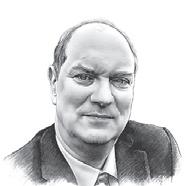


The internet has a greater carbon footprint than the airline industry.
Last sU mmer, sen. Bernie Sanders (I-Vt.) blasted the oil, pharmaceutical, insurance, and even food production industries, asserting that using the COVID-19 pandemic and the war in Ukraine as excuses, all “the corporate world has done is use all of that to substantially raise prices in America,” and there should be a “windfall profits tax on those crooks.”
Oddly, Big Tech is never high on the left’s list of corporate monsters, if they’re there at all. It’s no mystery why: Ranging from trailblazing the radicalization of society to financing Democrats’ campaigns, the computer industry has, for decades, been squarely and dependably on the left’s side.

However, there’s no denying that the corporations that power the internet and who have turned cyberspace into a titanic mega-hard drive encompassing in excess of 1 billion gigabytes have committed transgressions against the “green” god rivaling those of which the oil and gas industry is accused.
“The internet cannot function without enormous expenditures of energy for cooling and humidity control,” according to University of Maryland professor of digital studies Jeffrey Moro, who’s working on a book on the “Cloud” that’s based on his dissertation.
Last year, MIT anthropologist Steven Gonzalez Monserrate studied what he calls the “ever-expanding, carbon-hungry Cloud,” drawing firsthand on “five years of qualitative research and ethnographic fieldwork in North American data centers,” the facilities where the giant servers we all depend on are located.
He found that “the Cloud now has a greater carbon footprint than the airline industry.”
“A single data center can consume the equivalent electricity of 50,000 homes,”
Monserrate said. “At 200 terawatt hours (TWh) annually, data centers collectively devour more energy than some nation-states. Today, the electricity utilized by data centers accounts for 0.3 percent of overall carbon emissions, and if we extend our accounting to include networked devices like laptops, smartphones, and tablets, the total shifts to 2 percent of global carbon emissions.”
and so forth,” Monserrate said.
He pointed out that in some cases, only 6 to 12 percent of the energy consumed is for active computational processes.
The Cloud also thirsts. Many data centers need chilled water flowing through their racks of servers. The National Security Agency’s Utah Data Facility consumes 7 million gallons of water daily, with the residents of Bluffdale, Utah, paying the price with water shortages and blackouts. In reaction, Google and other tech companies have promised better “water stewardship” in the future.
The left asks rhetorically why the fossil fuel and pharma industries need so much of what they characterize as excess profits. It’s because it takes a fortune to innovate, to have scientists travel down what turn out to be empty roads in order, eventually, to discover the means of drilling sideways to access once impossible-to-reach deposits of oil and gas, or cures and treatments for particular strains of leukemia or Lou Gehrig’s disease.
The left might similarly ask why the Cloud needs data centers “designed to be hyper-redundant,” as Monserrate describes. The answer: “If one system fails, another is ready to take its place at a moment’s notice, to prevent a disruption in user experience.”
Examples of this are the data centers’ air conditioning systems “idling in a low-power state, ready to rev up when things get too hot.”
“The data center is a Russian doll of redundancies: redundant power systems like diesel generators, redundant servers ready to take over computational processes should others become unexpectedly unavailable,
Data centers can expel 150,000 pounds of carbon dioxide into the air every year, powered as they are by diesel instead of cleaner forms of energy because of diesel’s reliability. Some 70 percent of global internet traffic passes through the Ashburn, Virginia, area’s “data center alley,” and backup servers mean that as much as 90 percent of the energy it takes from the electrical grid can be wasted.
And yet with data traffic expected to increase by 150 percent over the next several years and data-storage infrastructure possibly tripling over the next decade, the trend is toward “hyperscale” data centers, with Amazon, Google, and Microsoft owning half of these often football field-sized locales encompassing tens of thousands of racked servers. The cooling of existing server farms alone consumes more energy than the countries of Argentina, Egypt, and South Africa combined.
So, the next time a politician on the left during a hearing accuses big oil of polluting the planet, someone should point to the carbon-guzzling laptop or tablet from which he or she is reading the staff-prepared questions or the smartphone in that politician’s pocket. We’ve all come to depend on computers—nearly as much as we do on gasoline and heating oil.
The cooling of existing server farms alone consumes more energy than the countries of Argentina, Egypt, and South Africa combined.
ANDERS CORR is a principal at Corr Analytics Inc., publisher of the Journal of Political Risk. He is an expert in political science and government.

The phoenix is a sadly apt metaphor for China’s military
The c hinese c omm Unist Party (CCP) styled itself a mythical phoenix in a 1959 propaganda poster. The phoenix rises from a sheaf of wheat to govern China, depicted as a dragon emerging from the smelting pot of industrialization.
That phoenix now boasts a formidable nuclear arsenal.
The CCP’s rapid military buildup could make it, like the eternal phoenix, a near-permanent fixture of the future. Nuclear weapons will deter the CCP’s foreign adversaries, and its techno-totalitarianism can quash internal dissent. No dictatorship as powerful as the CCP, or as technologically sophisticated, was ever defeated in war or by internal enemies.
The mythic phoenix was red and gold, like the CCP’s flag. Like Beijing’s state-owned mouthpieces, including Phoenix TV, the regime attempts a melodious cry that, to free ears, sounds more like the siren song of an ideologue.
Unlike the phoenix, however, the CCP seeks to speed the process of its “rejuvenation” by destroying, rather than just replacing, its predecessor. Like Russian President Vladimir Putin’s attempts to vanquish democratic Ukraine, Chinese leader Xi Jinping wants to demolish democracy not only in Taiwan but also globally.
The CCP is obviously beguiling to Beijing’s leadership, which controls its fearsome power. But for the rest of us, the CCP is a threat to our freedoms, liberties, and diverse cultures.
To save ourselves, we must be able to defend against China’s growing military, about which languid democracies in North America and Europe are finally becoming educated.
On April 19, The New York Times published an article about China’s emergence as the third nuclear superpower, with the United States and
Russia. The NY Times reported that the CCP appears to be lying about its new breeder reactors, which produce plutonium. Although Beijing claims that the reactors are purely civilian, the NY Times quotes an expert saying, “Breeder reactors are plutonium, and plutonium is for weapons.”
The Biden administration’s weak reaction to China’s military buildup is apparently to beg for more cooperation and assure Beijing publicly that despite all their transgressions, we aren’t targeting the CCP as a whole.
U.S. Secretary of the Treasury Janet Yellen called for more cooperation with Beijing on April 20.
U.S. Secretary of Defense Lloyd Austin has long bemoaned repeated rebuffs by his counterpart in Beijing, including after the United States shot down China’s spy balloon. The Pentagon has for years attempted to increase talks with its counterpart in China, to no avail.
On April 18, we learned not only that Beijing has hypersonic missiles that successfully circumnavigated the world, but also that its surveillance capabilities are deployed on supersonic vehicles that evade our best defenses by flying at Mach 3 and at 100,000 feet.
Despite Russia’s invasion of Ukraine, Beijing feels comfortable deepening its defense cooperation with Moscow, including through military exercises. On April 16, Putin met with China’s sanctioned defense minister, and the two hailed their growing military ties.
April 19 brought news of China’s first policy to increase military recruitment of veterans and the better educated during wartime. The policy appears to form part of Beijing’s future war planning.
On April 16, we learned that China is apparently building an air and naval base in the Bay of Bengal, giving Beijing a critical link in what is developing into a string of military bases from its coast through the South China Sea and onward to the Cambodian coast, Burma’s Great Coco Island, Sri Lanka’s Hambantota port, Gwadar port in Pakistan, and the already-completed People’s Liberation Army base in Djibouti, Africa.
NATO seeks an agreement with Beijing on limiting military uses of artificial intelligence, despite the CCP’s repeated violation of its international agreements, including, most recently, the 2020 Trump trade agreement and, most spectacularly, the 1984 Sino-British Joint Declaration on Hong Kong’s autonomy.
The CCP has proven time and again that it is an unreliable partner. What remains is a threat to the world, with which negotiations are untenable.
In Islamic mythology, the phoenix (anqa or simurgh) was perfection, as communism claims to be. But the anqa became a bane to humanity and had to be defeated.
The CCP, as brightly colored its plumage and mellifluous its cry, follows the same path.
The United States has, for the past five years, attempted a trade war with China to rectify its trajectory. But that failed to defeat the CCP, which is only growing stronger. Perhaps the sanctions and tariffs need to be more thorough and more widely adopted by our allies. Perhaps that can’t be achieved before the CCP attacks Taiwan and pulls the world toward another major military conflict. In which case, we’d better get ready.
The CCP’s rapid military buildup could make it, like the eternal phoenix, a near-permanent fixture of the future.
MILTON EZRATI is chief economist for Vested, a contributing editor at The National Interest, and author of “Thirty Tomorrows” and “Bite-Sized Investing.”

s U. s . firms rethink their sourcing in China, some, it seems, have decided to bring their operations home.
In 2022 and so far this year, investment in domestic U.S. manufacturing has risen smartly. Some of this spending aims to take advantage of federal largess, subsidies, and tax advantages for domestic chip-making, electric vehicles (EV), and the like. But the trend also seems to have support from other, more durable economic fundamentals. The recovery, however, is much more about capacity and output than about employment.
Last year, the Commerce Department reported that spending on new manufacturing capacity equaled some $108 billion, up 12.5 percent from 2021. Only two months’ data are available in 2023, but they show a marked acceleration from last year’s growth pace. February spending is already 8.2 percent over that of December 2022. Overall manufacturing capacity has risen only a modest 1.4 percent over the past 12 months, but that’s only reasonable since even a bumper year of new investment does little to alter overall capacities built up over the years. The trend nonetheless is encouraging, showing capacity growth after more than 10 years of decline between 2007 and 2020.
There can be little doubt that some of this investment surge reflects the CHIPs for America Act and the strangely named Inflation Reduction Act. Both were passed last year and offer subsidies for the domestic construction of semiconductor manufacturing facilities. Soon after the legislation passed, Intel and Taiwan Semiconductor Manufacturing Co. (TSMC) both announced their intention to build new facilities in the United States, and money has already begun to flow. Intel had planned its facility before the legislation passed,
but spending no doubt accelerated in response to the new laws.
While the legislation clearly has had an effect, it cannot sustain investment spending at its present rate of growth. Once manufacturers replace overseas operations and telescope into the current U.S. facilities planned for future years, the pace of investment growth should slow to that of the global market for semiconductors and EVs. No doubt, chips, EVs, and batteries will grow at a smarter pace than other forms of manufacturing, but nothing resembling the pace of the present surge. But if the legislation will have a diminishing effect, other, more fundamental influences should sustain a domestic U.S. manufacturing expansion.
Wage differentials have had their own influence on this production equation. For years, cheap, reliable labor in China and elsewhere in Asia drove U.S. businesses to take the risk of long supply lines and other unknowns to build and source in China. The wage differentials were certainly compelling. In 2000, just after China joined the World Trade Organization (WTO), the average U.S. wage was 33 times that of the average in China. But as China’s economy has developed, wages there have begun to catch up to those in the United States. At last measure, U.S. wages were some 6.5 times the Chinese equivalent, still a big difference but nowhere near as compelling as earlier.
Supply chain considerations, energy costs, and rising interest rates are three of these factors. The supply chain story is a familiar one by now. During the pandemic and in the recovery as quarantines and lockdowns lifted, businesses discovered that supplies and sourcing placed offshore were less reliable than once thought and certainly were needed. In response, some firms have decided to bring some or all of their operations home. That trend found reinforcement as, at the same time, energy costs and energy reliability in China and elsewhere also worsen. Meanwhile, rising interest rates played a role. By impelling retail and wholesale buyers to keep their inventory stocks lean, manufacturers faced a demand for prompter and more frequent deliveries, something well served by nearby production facilities.
Meanwhile, automation by reducing the need for squads of workers has further sapped whatever wage advantage China still has. Comments by Black and Decker CEO Donald Allan Jr. put the effect succinctly into perspective. He compared his firm’s plants in China and Mexico with a new one just built in North Carolina. The Mexican and Chinese plants, he explained, require 50 to 75 workers on the line, but the one in North Carolina requires only 10 to 12 workers; in the next phase of automation, it will require only two or three workers.
There are signs that a lot of the money being spent aims at automation and not raw expansion. Commerce Department statistics indicate that only about 15 percent of overall business investment spending went to the construction of structures. The remaining 85 percent went to equipment and intellectual property—in other words, to a focus on efficiency-enhancing investments, such as systems, robots, and the like.
U.S. manufacturing will grow, but it won’t employ the numbers it did in the past nor even that it employed overseas not too long ago.
The recovery, however, is much more about capacity and output than about employment.
ANDREW MORAN has been writing about business, economics, and finance for more than a decade. He is the author of “The War on Cash.”
Fed official warns that the digital dollar may threaten Americans’ freedom
Central B ank digital currencies (CBDC) might pose “significant risks, challenges, and tradeoffs,” Federal Reserve Board member Michelle Bowman warned in a recent speech.
It has been about a year since President Joe Biden signed an executive order that directed the federal government to examine the technological infrastructure and capacity for establishing a CBDC.
Since then, the Fed has published multiple papers, and officials have remarked on the concept behind CBDCs. Fed Chair Jerome Powell noted that the United States is still a long way from creating a digital dollar.
But Bowman is warning that a CBDC could be a “risk” and “impediment” to Americans’ “freedom.”
“In thinking about the implications of CBDC and privacy, we must also consider the central role that money plays in our daily lives, and the risk that a CBDC would provide not only a window into, but potentially an impediment to, the freedom Americans enjoy in choosing how money and resources are used and invested,” Bowman said in prepared remarks at a Georgetown University event on April 18.
A CBDC might also result in a type of control that leads to the “politicization of the payments system and, at its heart, how money is used.” If that happened, the central bank’s independence might be undermined.
As the various parties assess incorporating CBDCs into the financial system, Bowman believes “unintended consequences” could spring from digitizing the dollar. One of these could be threats to the financial system, because this could lead to “even more rapid bank runs.”
“These are exactly the types of issues that policymakers must confront,” she said. “It would be irrespon-
sible to undermine the traditional banking system by introducing a CBDC without appropriate guardrails to mitigate these potential impacts on the banking sector and the financial system.”
The institution’s digital payments system, FedNow, will be launched in July. It aims to address many of the challenges that CBDC promoters discuss by establishing “a leading-edge payments system that is resilient, adaptive, and accessible.” This includes speeding up and lowering the cost of transactions.
Some have suggested that this is the beginning of a CBDC. However, the central bank recently confirmed that FedNow “is not related to a digital currency.”
“The FedNow Service is neither a form of currency nor a step toward eliminating any form of payment, including cash. The FedNow Service is an instant payments service provided by the Federal Reserve, launching in
July 2023,” the Fed wrote in a tweet. Bowman argued that the FedNow might make CBDCs redundant, asking what they could achieve “over and above what instant platforms alone can accomplish.”
Many lawmakers in Washington and think tanks have expressed the same concerns as Bowman.

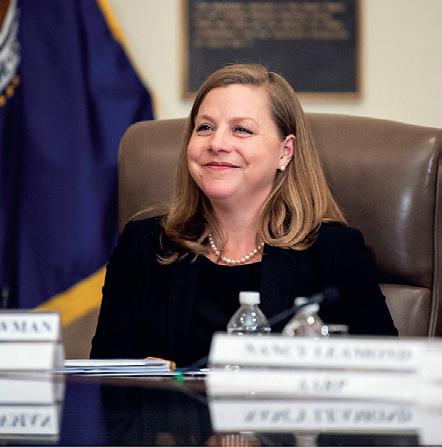
In March, Sen. Ted Cruz (R-Texas) introduced legislation prohibiting the Fed from creating a CBDC, stating that it “could be used as a financial surveillance tool by the federal government.”
House Majority Whip Tom Emmer (R-Minn.) also submitted the CBDC Anti-Surveillance State Act in February to stop “unelected bureaucrats” from issuing a CBDC that would potentially “strip Americans of their right to financial privacy.”
Even at the state level, there have been efforts to halt instituting CBDCs.
Republican Florida Gov. Ron DeSantis announced legislation to shield residents from the current administration’s “weaponization of the financial sector.”
“The Biden administration’s efforts to inject a centralized bank digital currency is about surveillance and control,” he said in a statement.
The Cato Institute recently published an in-depth report explaining that the U.S. government should not issue a CBDC “when the costs are so high and the benefits are so low.”
“The threat to freedom that a CBDC might pose is closely related to its threat to privacy,” policy analysts Nicholas Anthony and Norbert Michel wrote. “With so much data in hand and consumers so closely connected to the central bank, a CBDC would provide countless opportunities for the government to control citizens’ financial transactions.”
It’s estimated that about 100 countries are developing a CBDC.
A CBDC might jeopardize the independence of the Federal Reserve.
Defending a strong monetary and fiscal policy is the most patriotic act
Former p resident
Donald Trump has expressed concern that the Chinese renminbi could displace the U.S. dollar as the global reserve currency. The warning follows reports of agreements between various nations to use the yuan in commodity transactions.

For years, rumors have circulated about the demise of the U.S. dollar as a global reserve currency, but the greenback continues to be the most traded and extensively used currency in the fiat world.
In 2022, the U.S. dollar “remained the world’s dominant vehicle currency.” In April 2022, it was on one side of 88 percent of all transactions, unchanged from the previous survey. The euro, the Japanese yen, and the pound sterling remained the second, third, and fourth most-traded currencies, respectively.
The Chinese renminbi showed the greatest increase in market share since the 2019 survey, accounting for 7 percent of all transactions in 2022 (compared to 4 percent in 2019). Despite the yuan’s rise to the fifth most-traded currency, its market share of 7 percent is still disproportionately small compared to the size of the Chinese economy in the global context.
China doesn’t pose a threat to the U.S. currency. The regime, if anything, is threatened by the U.S. government and the central bank. Let’s examine why.
Today, there’s no alternative to the U.S. dollar. It’s the world’s reserve currency due to its open and flexible financial market, freedom of capital movement, investor and legal security, and its status as a secure haven during times of uncertainty, as the year 2022 once again demonstrated.
The yuan’s appeal as a global currency is severely hampered by capital
controls and currency price-fixing by the People’s Bank of China. It’s impossible to simultaneously have a global reserve currency and capital controls.
We tend to overlook how crucial it is to have an independent, stable, and transparent legal and investor security framework for a currency to be extensively used internationally. However, we must recognize that opening the financial market, allowing the currency to float, and instituting a transparent and independent legal framework are all things that nations can do.
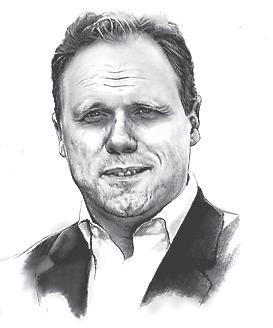
If China awakens and decides to increase the value of its currency, it can do so by adopting the open and free market systems that other nations enjoy. China can’t anticipate having a confined and regulated financial system as well as a global currency.
Who then can jeopardize the status of the U.S. dollar as the world’s
reserve currency? Only the U.S. government, with the assistance of the Federal Reserve, can dethrone the dollar.
How? By inflating the deficit and debt to uncontrollable levels and monetarizing them. If the world perceives that the issuer of money has abandoned its commitment to maintaining the reserve of value of monetary units and that the government is constantly eroding the purchasing power of the currency through deficit spending and diminishing investor and legal security, confidence in the currency may be lost.
To date, the U.S. dollar has maintained its status as the world’s reserve currency because all other alternatives have implemented the same or larger monetary imbalances without the global demand that the U.S. dollar enjoys due to the legal and investor protections it provides. The United States can only retain its monetary throne if it demonstrates a firm commitment to sustaining the value reserve, an open market, and legal security.
Governments believe they can test the limits of their citizens’ forbearance by eroding the purchasing power of the currency and incessantly increasing the debt and fiscal imbalances. Until it fails. Defending a solid monetary and fiscal policy is, therefore, the most patriotic endeavor.
The U.S. government must recognize that it has all the instruments necessary to maintain the dollar’s status as the world’s reserve currency. It must also recognize that it’s employing the instruments that could destroy the currency. This is its decision. The only way fiat currencies can retain their status is if the world continues to have faith in them. It’s imprudent to exceed the limits of fiscal trust.
Only the U.S. government, with the assistance of the Federal Reserve, can dethrone the dollar.
FAN YU is an expert in finance and economics and has contributed analyses on China’s economy since 2015.
ith any looming recession, household debt is one of the clearest indicators of its severity.
Unlike the 2008 crisis, household debt is mostly manageable this time, although the picture worsens as inflation remains high.
A burgeoning but often overlooked source of household debt resides in “buy now, pay later” (BNPL) apps.
These apps fall within the realm of “fintech” and generally aren’t run by banks—with all of the regulatory reporting that comes with being a bank—so their magnitude and impact have been hard to measure.
BNPL apps include Klarna, Affirm, Afterpay, and PayPal, while new services are entering the field weekly.

How do these apps work?
Like a credit card, the consumer can pay for a purchase later. After a down payment, the BNPL app will charge the consumer the rest of the purchase in equal installments that typically last no more than a few months. Unlike credit cards, BNPL apps usually don’t charge interest, and there is no credit report hard inquiry, unless the customer defaults on or misses payments.
And unlike credit cards and personal loans from banks, BNPL apps are very easy to get approval for and don’t come with high-interest rates.
However, like credit cards and loans, it’s another way to sink into debt.
BNPL apps rose to prominence during the COVID-19 pandemic, with more than $24 billion of such installment loans originated by U.S.-based lenders in 2021, Consumer Financial Protection Bureau (CFPB) data show. The BNPL market today is a $132 billion sector that could grow
to $3.5 trillion by 2023, according to research from Straits Research. The majority of the users appear to be Generation Z consumers.
The BNPL apps were popular for big-ticket purchases, such as electronics and appliances. But as inflation continues to take its toll on consumers, Americans are increasingly turning to these apps and taking on additional debt burden to buy groceries and other everyday items.
Online sales using BNPL apps rose 27 percent in 2022, data from Adobe Analytics show. In the first two months of 2023, revenues increased another 10 percent. The types of purchases were also eye-opening, as the share of BNPL usage on grocery purchases jumped 40 percent during the first two months of this year.
It doesn’t help that banks, retail-
ers, and corporations are increasingly pushing BNPL apps to boost sales in a floundering economy. Industry research shows that credit card usage isn’t expected to grow very much. So retailers are rushing to integrate fintech solutions, such as BNPL platforms.
And that has sent valuations of BNPL startups to nosebleed levels. Sweden-based BNPL app Klarna, in a mid-2022 fundraising round, was valued at more than $6 billion. While that’s a high valuation, it still pales to the $46 billion valuation attached to the firm from a 2021 SoftBank fundraising.
The BNPL market has been so hot that even Apple has jumped into the fray. In late March, Apple announced its own BNPL app called Apple Pay Later, allowing consumers to split purchases made using Apple Pay into six weekly interest-free installments. Loans of up to $1,000 can be approved on purchases made with Apple Pay on iPhones and iPads.
The CFPB states that these apps are “engineered to encourage consumers to purchase more and borrow more. As a result, borrowers can easily end up taking out several loans within a short time frame at multiple lenders or Buy Now, Pay Later debts may have effects on other debts.”
Last year, consumers added more than $1 trillion of household debt, an increase not seen in more than a decade, according to data from Experian. Those amounts include mortgages, student loans, auto loans, credit cards, and personal loans.
Debt from BNPL apps didn’t even figure into those amounts. The nascent BNPL fintech industry is just another way for already over-levered Americans to go further into debt.
Debt from BNPL apps didn’t even figure into those amounts. The nascent BNPL fintech industry is just another way for already overlevered Americans to go further into debt.
Examining childhood immunizations and the pandemic as a tool of tyrants
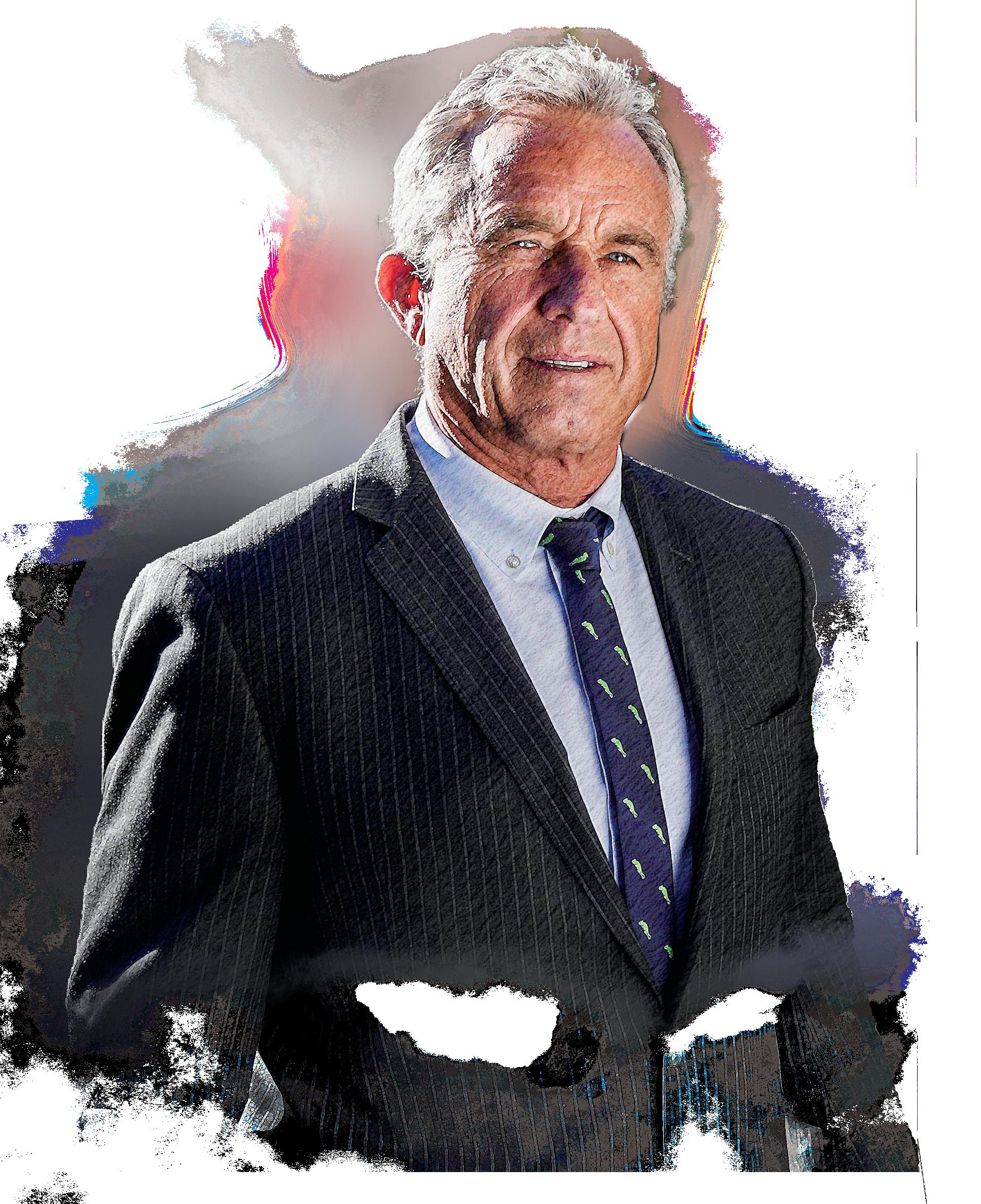
YoU have scientists who are supposed to be regulators, who are making money on the product they’re supposed to be regulating,” says Robert F. Kennedy Jr., the founder and chief legal counsel of Children’s Health Defense and the author of “The Real Anthony Fauci.”
In a recent two-part episode of “American Thought Leaders,” host Jan Jekielek sat down with Kennedy to discuss subjects ranging from his fierce criticism of the vaccine approval process to the weaponization of some government agencies against the American people.
In the interviews, Kennedy reveals the failures of health agencies to properly test vaccines, attacks the financial web connecting these agencies and pharmaceutical companies, and examines the intrusions of our intelligence agencies into domestic affairs.
JAN JEKIELEK: “The Real Anthony Fauci” is a remarkable book and about much more than Dr. Anthony Fauci, but about the whole development of the biopharmaceutical industrial complex and what you call a global war on democracy and public health. Tell me about the genesis of this book.
ROBERT F. KENNEDY JR.: I spent almost 40 years as an environmental advocate, and I had seen and written extensively and litigated on this issue of agency capture, which is a conspiracy of mechanisms by which regulatory agencies become captured by the industries they’re supposed to regulate.
Instead of protecting public health or the environment, they become sock puppets for the industry they’re supposed to regulate. When I began litigating and advocating on the vaccine issue in 2005, I was dumbstruck not only by the level of agency captures within the public
health agencies, but by the financial entanglements.
For example, the FDA [U.S. Food and Drug Administration] receives 75 percent of its drug approval budget from the pharmaceutical industry. Almost 45 percent of its total budget comes from the pharmaceutical industry. Not only NIH [National Institutes of Health] as an agency, but individual scientists within NIH are allowed to patent drugs they work on and then turn them over to the pharmaceutical industry and collect royalties on them. Those scientists over the past decade or so have collected some $300 million in royalties.
You have scientists who are supposed to be regulators who are making money on the product they’re supposed to be regulating. The regulatory function of these agencies becomes subsumed by the mercantile ambitions of the pharmaceutical companies.
To give you another example, the CDC [Centers for Disease Control and Prevention] has a $12 billion annual budget. Almost $5 billion of that goes to purchasing vaccines in secretive sweetheart deals with the big vaccine companies, and then compelling or persuading large numbers of people to take those vaccines, mainly children.
With the metrics at that agency, if you want a promotion or if you want a salary increase, you don’t get that by finding a problem with a vaccine. You get that by showing you’ve contribut-
ed to the expanded coverage of vaccine use. It’s a perverse incentive for a regulatory agency protecting public health because it makes them an arm of the industry.
Anthony Fauci is the embodiment of that institutional corruption. He’s lasted 50 years not because he’s done a good job at protecting public health; it’s because he’s done a good job at protecting industry profits.
When he came into office in 1968, about 6 percent of Americans had chronic disease. By chronic disease, I mean not only obesity, but neurological disease, allergic disease, and autoimmune disease. By 1986, 11.8 percent of American children had chronic disease. By 2006, that number had risen to 64 percent. That’s his track record. He claims he’s protecting Americans from infectious disease, but he rarely talks about chronic disease, which is much more devastating than infectious disease.
Meanwhile, the vaccines scheduled during that period went from the three vaccines that I took when I was a kid, and I was fully compliant, to 72 doses that are mandated today from 16 vaccines. The question is, has that made Americans healthier?
In 2000, the CDC did a study with Johns Hopkins University. They looked at this question, “Did vaccines have anything to do with the momentous decline in mortalities from infectious diseases between 1900 and the present?”
The CDC study found that the
“A lot of science supports the supposition that most of these vaccines, not all of them, but most of them, are causing more injuries and deaths than they are averting.”
vaccines had almost nothing to do with it. Instead of physicians and scientists being responsible for that reduction, it had been engineers. It was greater sanitation, the roads that brought food like oranges and citrus to northern cities, better nutrition, better sewage treatment plants, chlorination of water, and a number of other engineering advances that were really responsible for the decline in death from infectious disease.
MR. JEKIELEK: What you’re describing stands in the face of what everybody is supposed to know. “Vaccines save 2 to 3 million lives a year” is what’s typically said.
MR. KENNEDY: There are a lot of claims about vaccines and how many lives they’ve saved, but there’s very little science to support that. Vaccines are exempt from pre-licensure safety testing. They’re not tested for safety against placebos in any kind of functioning trial prior to being approved because vaccines are regulated differently than other medicines.
This has to do with the CDC’s legacy as a public health service. The Public Health Service, the predecessor of the CDC, launched the vaccine program as a national security defense against biological attacks on our country. They wanted to make sure if the Russians attacked America with some biological or pathogenic weapon that we could quickly formulate and deploy a vaccine to 200 million Americans without regulatory impediments. But calling it a medicine would have meant placebo-controlled trials, which take five years.
Why five years? Because many of the injuries that come from vaccines, like all medicines, are long-term injuries. You may say that the vaccine prevented the infection, but you don’t count the cancers, the neurological disorders, the ADHD, and the autoimmune diseases that pop up five years later. You need long-term studies.
But there was an urgency to deploying vaccines, so they said, “We’ll call it a biologic, and we’ll make biologics exempt from long-term safety studies.” None of the 72 doses of vaccines currently mandated for children have ever been tested in a pre-licensing safety study against a true placebo.
Here’s an example of what I worry about. For many years, Bill Gates and the WHO [World Health Organization] have pushed children to receive the DTP [diphtheria, tetanus, pertussis] vaccine. It’s the most popular vaccine in the world because of their efforts.
We withdrew that vaccine in the 1980s in this country because it was killing so many children and causing brain damage, according to an NIH study done by UCLA. We replaced it with a DTaP vaccine, which is safer but less effective. They did the same thing in Europe.
Meanwhile, Gates and the WHO were giving it to African and Asian
children. In 2016, they asked the Danish government for funding, though Denmark wasn’t using this vaccine. The government wanted to see a study showing the vaccine actually saved lives. Bill Gates was unable to provide that.
Then, the Danish government said, “We’re going to do this study.” They went to Western Africa, where they have very good clinics and 30 years of vaccination records. They brought in the best scientists in the field and did a study of the records.
They found that girls who had received that vaccine were 10 times more likely to die than unvaccinated children. They were not dying of things that anybody had ever associated with the vaccine, but of anemia, bilharzia, malaria, dysentery, and pulmonary respiratory issues like pneumonia. It was not until these Danish scientists looked at the data over 30 years that they realized, “Holy cow, this vaccine is killing more people than diphtheria,

tetanus, and pertussis did prior to the introduction of the vaccine.”
That’s the danger. You could have a vaccine for 30 or 40 years and nobody actually notices that the kids who are taking it are worse off from a health perspective, because you’ve never done the placebo-controlled trials.
MR. JEKIELEK: It strains credulity that such an obvious type of test wouldn’t be done. There is safety information on every vaccine in the insert.
MR. KENNEDY: If you look at a vaccine insert, for example, for the MMR [measles, mumps, rubella] vaccine, it probably has 60 or 70 injuries listed. At one point, because of a lawsuit, I actually had to go through all of the vaccine inserts for the mandatory vaccines now being given to children between birth and 18 years old. There were 420 listed side effects, including death, paralysis, and brain damage. Even autism is listed now. That’s the one place where they tell the truth, the vaccine companies.
Doctors are told that these are miracle technologies. They’ve saved millions, tens of millions, hundreds of millions of lives, but there’s no science supporting that. On the other hand, a lot of science supports the supposition that most of these vaccines, not all of them, but most of them, are causing more injuries and deaths than they are averting.
MR. JEKIELEK: Going back to your uncle’s assassination in the 1960s, we’ve heard that U.S. agencies may have been involved way back then. Now there are people asking, “Do we even live in a democracy today?”
“The Global War on Democracy” is the subtitle of your book. Did something change at that time that we weren’t aware of?
MR. KENNEDY: Yes, I think something did change back then. When I was 7 years old, on January 17, 1961,
my birthday, President Eisenhower made what I look at today as the most important speech in American history. It was his farewell speech to the nation.
Three days later, my uncle John Kennedy would take the oath of office, but Eisenhower gave this wonderful speech in which he warned America against the emergence of a military-industrial complex, a permanent war industry, and an associated federal science technocracy, which he specifically mentioned, that, if not constrained, would dominate American democracy and rob us of all the things that are important about our country.
My uncle realized that Eisenhower had captured the most important issue of our time. He spent the next three years of his presidency in combat with his own military-industrial complex.
Years later, when the Cold War ended in 1992, we were supposed to get a peace dividend. We were supposed to beat our swords into plow shares and put that money into projects like schools, roads, and the environment, and into rebuilding the gutted middle class in this country. In the next year, we had the first World Trade Center attack, and then in 2001 came 9/11. By the end of that decade, we had 888 military bases abroad. That’s an imperial nation.
I would say the most recent blow in this coup d’état against democracy by the military-medical-industrial complex and the biosecurity agenda
was COVID-19, when the government began censoring speech. Those in charge of government and its agencies successfully asserted power to suppress dissent. They closed the churches for a year with no scientific citation and no regulatory process. There were no hearings, no rationale that anybody could see or challenge in any way. They got rid of freedom of assembly, which is also in the First Amendment, by the social distancing dictates. They went after property rights for the Fifth Amendment, shutting down 3.3 million businesses with no due process and no just compensation, in total violation of the Constitution.
One of the big worries of the people who made the Constitution is that demagogues and tyrants would be able to persuade an uneducated public to relinquish their rights. We were the first country with mandatory public education. They understood that an uneducated public could easily be manipulated through propaganda.
Today, unfortunately, the mechanisms by which people are being educated are social media and the legacy media. As we saw in the pandemic, social media is influenced by the intelligence agencies, the government, and the regulatory agencies orchestrating this coup d’état against democracy.
MR. JEKIELEK: You said the educated are supposed to be able to notice the demagoguery and the
“[The people who made the Constitution] understood that an uneducated public could easily be manipulated through propaganda.”
propaganda, but it was actually the truckers, ostensibly the less educated, who saw through this.
MR. KENNEDY: That’s a good point. It was shocking to me that the most educated people, the people who had been the most tenacious in their defense of the Bill of Rights from the McCarthy era through the Iraq war, suddenly became disabled by this incredibly skilled propaganda push.
How do you impose centralized control on an indigenous population of a foreign country? First of all, you disable institutions by using propaganda to sow fear by polarization, deliberate polarization of the population by sowing the country with chaos agents, and all these techniques for creating chaos in developing countries so that you can come in. The CIA was involved in coup d’états or attempted coup d’états between 1947 and 1997 against a third of the nations on Earth.
Around 2016, with the election of Trump and with Brexit, it seems that the intelligence agencies made a decision to turn all of those weapons onto the American people. We saw this extraordinary propaganda campaign at the beginning of the pandemic. “The CIA wouldn’t do that to America,” some people may say. “It’s illegal to propagandize in America.” Not anymore it isn’t.
During the Obama administration, essentially the old law that had forbidden this was overridden. It was also overridden in the Patriot Act in 2001 during the Bush administration. The CIA gained increasing powers. They propagandize and use these techniques on Americans.
By the way, in the Fauci book, I talk about Event 201, which was a pandemic simulation that took place in October 2019 in New York. It was sponsored by Bill Gates, the World Economic Forum, and the Chinese CDC. The social media companies were there and the pharmaceutical
companies were there. The big corporate PR firms were there.
MR. JEKIELEK: And the current DNI [director of national intelligence] was there.
MR. KENNEDY: Yes, the current DNI, Avril Haines, was there. At that time, she was the former deputy director of the CIA, and there she is at this simulation. So what’s the CIA doing at a pandemic simulation? They’re not a public health agency. Anyway, Event 201 simulated a global coronavirus pandemic that killed 60 million people, a lot more than the actual one, which we learned about two months later, although the virus was already circulating in October 2019.
We didn’t know about Event 201 until January 8, 2020. What are they talking about at that event? They’re not talking about public health. They’re not talking about how we get vitamin D to everybody to build their immune systems or how we quarantine the sick while protecting constitutional rights.
No, they’re talking about using this pandemic as a pretext for clamping down with totalitarian controls. The first thing they said is, “We have to limit free speech. We can’t allow people to criticize government policies, and particularly, we can’t allow people to talk about a lab leak.” They’re doing this in October 2019, before any of us had ever heard of Wuhan.
George Gao, who’s the Chinese CDC director, must have known at that point that this virus is already circulating, because he is the Chinese expert on coronavirus. He had to know it’s circulating in Wuhan, and in October, he’s with the CIA former deputy director talking about how we quiet people when they start talking about a lab leak. And she says, “Not only do we need to censor them, but we need to flood the zone with authoritative voices,” which means propaganda.
“Put on the mask, do what you’re
told, obey.” That fear has the capacity to disable critical thinking. That’s why it’s the tool of tyrants and they weaponized it.
MR. JEKIELEK: Where do we go from here?
MR. KENNEDY: I wouldn’t be fighting if I didn’t think there was hope for restoring democracy and value to our country. I don’t know what form that will come in, but I know that my job is to fight for it. The way that will happen is if enough individuals take personal responsibility for making it happen. For me, I don’t make predictions and I try not to get invested in outcomes.
But I know I have to get up every day and fight for democracy and human dignity and rights, and all the things that my God wants me to fight for.
I was in the environmental movement as a leader for 40 years. If you’re an environmentalist, every victory is temporary, and every defeat is permanent. If you lose a species, it’s gone forever. If you pave over a piece of landscape, you never get it back.
A lot of environmentalists burn out because they feel defeated. Their souls get crushed, and they feel hopeless. I decided at the beginning of my career that I was not going to do that. I wasn’t going to get invested in results. If you don’t have expectations, you’ll never get disappointed. If they’re not capable of disappointing you, they can’t defeat you, and you become relentless. That’s what makes somebody like me dangerous. No matter what they do to me, I’m going to fight them again.
All of us have to have that attitude, because that is what is ultimately going to give us victory. If you know what you’re going to do, let go of the outcomes and you can never be beaten.
This interview has been edited for clarity and brevity.
When investing in your retirement, you need a partner you can trust. With Oxford Gold Group, you can be confident you’ll receive the highest quality, care, and service unparalleled by anybody else in the industry.

Our
Life happens, and your needs may change. Modify your investments easily with our no-questions-asked re-purchase program.
Many americans recognize “semper fidelis,” or “always faithful,” as the motto of the Marine Corps, and they can at least hum the tune of the Marine Corps Hymn, which is the oldest official song in our armed forces. Like other venerable branches of the military, the Marines Corps, over its long history, has woven together a rich tapestry of slogans, slang, and statements of purpose, such as “leathernecks” and “The Drill Instructor’s Creed.”

More recently added to this collection is the Marine’s Prayer.
Written by Silver Star winner Charles Blythe, a veteran of the Korean and Vietnam wars, this prayer is remarkable for its ordering of a Marine’s priorities. After asking God to make one aware of His presence and obedient to His will, the prayer’s next two sentences read:
“Keep me true to my best self, guarding me against dishonesty in purpose and deed and helping me to live so that I can face my fellow Marines, my loved ones, and Thee without shame or fear. Protect my family.” Only the following lines of the prayer focus on the specific loyalties, character traits, and martial responsibilities that make for a good Marine.
This “first things first” list, honoring Divine Providence, followed by a commitment to loved ones, reflects a sense of priorities often AWOL these
days. Swept along by the torrent of daily obligations and details, we can easily forget the most important things in life.
that proceeds from a consciousness of duty faithfully performed.”
Next in the Marine’s Prayer comes that short and abrupt petition:
“Keep me true to my best self,” for instance, is a far cry from egotism or, worse, narcissism. A best self is that interior voice calling us to the path of virtue. The member of Congress who risks losing constituents by acting like a statesman rather than a politician, the father who declines a promotion and pay raise to avoid moving his family a thousand miles away from their beloved hometown, the shy mother who appears at a school board meeting to protest the sex-ed curriculum being taught to her children—these are people keeping true to the best within them. And these acts of eternal fidelity to truth, this rejection of “dishonesty in purpose and deed,” then allows them to face their fellow citizens, their friends and family members, and their God “without shame or fear.”
These men and women receive no medals for their unsung acts of valor, only the quiet appreciation of their colleagues and those closest to them. Their reward comes from what Robert E. Lee once called “the satisfaction
“Protect my family.” Whether you’re a Marine shipping overseas for a tour of duty or a parent driving to work after dropping the kids off at school, those three simple words contain a continent of anxieties and hopes. Whatever our religious beliefs, surely most of us have in some hour of need and suffering lifted our hearts in prayer, or cast a wish into the night sky, begging that our loved ones be shielded from harm or relieved from distress.
At the very end of the Marine’s Prayer, we find these words:
“Guide me with the light of truth.”
Truth can be tricky. Sometimes, the light of the old verities, those ancient guides to virtue, seems almost extinguished, smothered by obligations and circumstances. But then suddenly that guttering candle leaps to life, blazing and bright, our guiding lantern to the good life resuscitated by some scene from a film, lyrics from a song, a line poem, or even a friend’s casual remark.
Or, for that matter, by a prayer written for Marines.
Jeff Minick lives and writes in Front Royal, Va. He is the author of two novels, “Amanda Bell” and “Dust on Their Wings,” and two works of nonfiction, “Learning as I Go” and “Movies Make the Man.”

A best self is that interior voice calling us to the path of virtue.
In addition to wine, this region of Spain features breathtaking scenery, beautiful horses, and a lot of interesting history.

THIS UPPER EAST SIDE townhouse is remarkable on its own merits, but even more so as the residence of the late Ivana Trump, showcasing her style. 70
STAGES AT ONE WASHINGTON is renowned for creating remarkable dishes sourced from New England’s coastline, under the expert supervision of Chef Evan Hennessey. 75
DOGS ARE INCREDIBLE creatures that yearn to be our companions. With a bit of work, we can teach them how to help improve our lives. 76
Ivana Trump’s townhouse provides an intimate look at a lifestyle very few people ever get to experience.

Built in 1879, this meticulously maintained Upper East Side townhouse is a testament to Ivana’s unique style
By Bill LindseyEvery once in a while, a property comes onto the market that brings with it some very unusual attributes; sometimes it’s the location or the layout or the previous owner. This unique property manages to combine all of those factors.
Located on the Upper East Side of New York, this six-story, five-bedroom, 5 1/2 bath, 8,725-square-foot home was the residence of the late Ivana Trump, formerly wed to former President Donald J. Trump. Acquired after her divorce, the brownstone property with a columned façade and a mansard-style roof was originally built in 1879 and has been renovated often ever since.
The property lies between Fifth and Madison Avenues, a short walk from Central Park, Madison Avenue’s retail stores, five-star dining, and numerous museums.
The interior reflects Ivana’s lively sense of style, which is seen in its full glory upon entering through double doors into the formal galley, decorated with blood-red carpeting, gilded paneling, and an immense Italian crystal chandelier overhead. A curved marble staircase


leads to the second level and the formal dining room inspired by Versailles, with soaring ceilings, floor-to-ceiling windows, gilded fireplaces, and a private interior courtyard.

An elegant birdcage-style elevator stands ready to whisk the owner and guests to the upper levels of the townhouse. On the third level is the master bedroom, featuring a lavish mural, as well as a leopard-print-accented library; an office that’s also decorated with leopard-print wallcoverings, which accent the onyx and gold marble fireplace; and a private terrace accessed via French doors. The master bathroom features an oversized soaking tub, double sink vanity, and a private water closet.
The uppermost levels house the guest bedrooms: Several are on the fourth floor, each with private baths and views of the upscale neighborhood. An enormous guest bedroom is located on the fifth level, as well as accommodations with private bath facilities for live-in staff.
A kitchen well-equipped for lavish formal dinners is located on the ground level, along with an office, a garden, and access to the sauna and laundry room in the basement.

It’s a corner of spain that remains well off the main tourist track, nowhere near the popular cities of Madrid, Barcelona, or Málaga. Set on an Andalusian islet in the southwest corner of the country, the port city of Cádiz has been welcoming ships from around the world since ancient times—and they’ve all left their mark.
It’s a beautiful place, girded by baroque walls and guarded by more than 100 watchtowers, surrounded by the sparkling sea on every side. Residents bask in the sunshine more than 300 days a year. Arriving this morning by ship, and embarking on a day-long trip, my guide noted that this is one of the oldest cities on the continent.
“It was founded more than 3,000 years ago by the Phoenicians,” he said, as we rolled by the main cathedral, an ancient Roman theater, and a long sea wall where walkers, joggers, and cyclists were enjoying the Saturday morning sun.
Climbing away from the coast, we made our way toward the provincial capital, Jerez. “Yare-eth” is how you say it, or at least something along those lines. (Full name: Jerez de la Frontera.)
This city of about 300,000 is the worldwide capital for a fortified wine that I know little about. Except, of course, that it was the preferred pre-dinner beverage for the Crane brothers in that classic ’90s television show, “Frasier.” “Jerez” actually, somehow, literary translates to “sherry.” (It’s a long story, involving an older spelling, Xeres.)
On the half-hour drive up, we passed orange groves and olive trees and vineyards, arriving at one of the 100 “bodegas” in town—wine cellars that are open for tastings. Like Champagne, or Parmigiano Reggiano, sherry is protected as a DOP (Protected Designation of Origin) within the European Union; if the bottle says “sherry,” by law, it must come from the so-called Sherry Triangle.
Passing the walls of a 13th-century Moorish castle, and ducking a horse-drawn carriage, we entered González Byass, home to Tío Pepe. In 1835, a man named Manuel María González founded this winery and named it after his uncle and winemaking mentor. Five generations later, and now a huge company, it’s still in family hands. It has a rather jaunty logo—a bottle dressed in a jacket and broadbrimmed hat, with a Spanish guitar.
In addition to their 650 hectares (about 1,600 acres) under vine, the
consumer of sherry, after Spain.
Jerez is only a 20-mile drive from Cadiz Sherry is

Jerez de la Frontera, Spain, is known for its sherry.

aged using the Solera system.
The United Kingdom is the world’s second-largestSPAIN Madrid Jerez Cadiz
bodegas are part of what was once a company town, complete with its own school, hotel, and restaurants. We entered a massive bodega built in 1859, which houses 4,000 barrels, with wines dating back as much as 30 years. A company tour guide explained the sherry-making process, how juice (mostly from palomino grapes) is added to connected casks and then slowly extracted over many months, about a third at a time.
“This way, the barrels are never empty,” she said. “You maintain the consistency and taste.”
I tried three sherries, all pleasant and dry and sweet without being cloying. Then, our small group walked a short distance to the center of the city to make a brief visit to the main covered market. Inside, the crush and cacophony was fairly exhilarating. Some stands sell a colorful array of veggies and fruit, others, flowers. But the real action was at the fish market.
Dozens of sellers called out discounts on the catch of the day, with so much delicious marine life lying on ice before them. Almost every single one had a customer, and some, a crowd of hungry shoppers buying something special to take home and cook up for dinner.
I could’ve spent the whole day there, just soaking up the energy. But lunch awaited. We proceeded to a quiet neighborhood just
outside the city center. The entrance to La Carboná is simple and unassuming, but inside I found a huge space with looping archways and a soaring ceiling. It was once—what else?—a sherry bodega, and is now a Michelin-rated restaurant.

Head chef Javier Muñoz took our small group back to the kitchen. Sherry is at the heart of the operation, he told us, the fortified wine inspiring all the dishes and even Muñoz’s title—which is Chef del Sherry.
“I will show you every dish you will eat later,” he said as we crowded around his stove. And then all of a sudden, he was doing it: stirring and frying and boiling and plating, even a little razzle-dazzle when he added wine and the flame jumped from the pan—always a crowd-pleaser.
A six-course lunch followed, with wine pairings, langoustine, sea bass, risotto, and duck. Everything was balanced and delicate and delicious. I downed one last glass of sherry and then boarded the coach back to Cádiz.
As my afternoon siesta began in earnest, my head swam with visions of casks and busy fishmongers. And, of course, bottles outfitted in big hats, holding guitars. Sweet dreams indeed, Spanish-style.
Fly: Jerez Airport (XRY) receives flights from across Europe but not North America, so your itinerary will include a connection.
Getting Around: A tour is essential to experience the bodegas and kitchens of this region. Mine was planned as part of a cruise by the Viking company.
Stay: An actual “sherry hotel,” Hotel Bodega Tío Pepe is actually part of the González Byass complex.
Take Note: Jerez is home to a number of sherry wine bars—they’re called “tabancos” and typically also serve tapas.
New England cuisine gets a rebrand at the chef’s acclaimed Stages at One Washington
By Nick DaukWhen yo U ’ve cooked under Thomas Keller and Grant Achatz, nabbed $10,000 on Food Network’s “Chopped,” and owned a restaurant that’s regularly ranked as one of North America’s best, the whole world is your oyster.
But for New England native chef Evan Hennessey, there’s simply no place like home.

“I grew up here in Dover, [New Hampshire],” Hennessey said. “I’m not a city boy; I need the mountains, the ocean. I need to be near nature.”
The chef and owner of Stages at One Washington, set in a historic mill along the Cocheco River, has turned down opportunities to lead restaurants in the hallmark cities most chefs drool over. He’s more interested in championing his home region.
“We have an incredible bounty of ingredients all around us; I want to redefine New England cuisine,” he said. “So many people think that if it’s not chowder or apple pie, then it’s not New England. Not true—or rather, why not?”
Ask a casual diner to envision New Hampshire cuisine, and cured monkfish or beach radish-infused yogurt would hardly come to mind. And yet these are only a couple of the locally sourced items found on Stages’ menu.
“New England has a history of growing, cultivating, harvesting, foraging, and preserving that dates hundreds of years,” Hennessey said. “We pickle, ferment, dry, cure, smoke, and can various ingre-
Sea truffle chawanmushi with toasted peanuts, puffed wild rice, and ginger-peanut cream sauce.

Age: 46
Born: Arlington, Mass.
Lives: South Berwick, Maine
A Favorite Local Ingredient: “Our wild mushrooms have really complex herbal notes with different layers of sweetness and meatiness.”
Favorite City Outside of New Hampshire to Eat: “Louisville; I have a lot of fond memories of eating with my grandparents there.”
dients. One of our favorites is to salt brine fish with sea salt we made from the ocean from where we gather seaweeds, then smoke and cook at a very low temperature to preserve.”
By incorporating such techniques with local ingredients from land and sea, he achieves diverse flavors that, while reminiscent of Nordic or Japanese cuisine, are just as “American” as apple pie.


Guests sit at a six-seat countertop facing the kitchen, “so we’re able to describe, define, and have great conversations about where these ingredients came from and why we chose them,” he said.
One dish he’s especially proud of features sea truffles, red algae harvested from the New England coast that has the taste and aroma of black truffles, infused into his version
of chawanmushi, a Japanese steamed egg custard.
Another past dish involved an Irish Dexter cow raised with Old World slow-farming methods. Hennessey roasted the beef over an open fire while brushing it with a miso made from Jacob’s Cattle beans, which are native to New England. Additions of grilled dill and a French-style reduction sauce, made with roasted bone stock seasoned with black garlic, bridged this tribute to the region’s agricultural past with more modern cooking methodology.
“In 20 years, I hope people see New Hampshire as a destination for food,” Hennessey said. “There is so much more, and we know so much more, and that needs to be shown.”
The best dogs are those completely in sync with their humans, in a relationship based on love and patience.

Most dogs are eager to please, but they need to learn what is expected of them.
Training is an ongoing process that begins with how to get along with their owners.

The first step in training a dog is getting rid of the notion of “owning” a dog; they are sensitive living creatures with deep emotions. Even military and law enforcement K9 handlers view their canine partners as much more than a tool. Dogs see their master as the leader of the pack, whom they want to please. Giving the dog love and being patient are essential for successful training.
The first question is, “who will train the pup?” There are many answers, including boarding schools and in-person classes led by experts, but all options must include the dog’s owners. The best human–dog relationships are based on trust and affection.
Some owners are concerned about having a dog alongside young children, and many decide to rehome their dog when children enter the equation. But in many cases, the bond that forms between a dog and a young child is one that is often cherished for years.
A recent example involves Penny, a pit bull in Kentucky who remained at the side of the family’s 2-year-old
daughter while she was lost in the woods for two days, faithfully guarding and comforting the child until rescuers discovered them.
The most basic training starts with socialization and potty training. Focusing on these lays a foundation for progressing to more advanced skills such as those taught in the American Kennel Club’s (AKC’s) numerous online training programs.
Created by experienced trainers who know the classwork involves teaching the human as much as the dog, these focus on puppy training, how to keep dogs from chasing cars, dealing with separation anxiety, training with treats, establishing a fitness program, getting started in dog shows, and many more subjects. Even those who have had dogs for many years may benefit from these courses.
However, those who are new to dogs will need some training themselves; one good option is to attend private
Dogs are eager to please, so it’s important to teach them the basic commands that will make sure they have great manners.
Potty training is a critical skill every dog needs to master. Pee pad training helps avoid the trauma of “accidents” for those times the pup can’t make it outside in time.

Attaching a leash to a harness is healthier for small dogs than attaching it to a collar. If the dog is a service dog, consider a harness that also identifies it as such.

Although a lot of people start with puppies, keep in mind that even old dogs can learn new tricks.
or group classes held by Petsmart, Petco, or another retailer. In these multiweek courses, both the human and the pup learn basic to advanced skills in a fun, encouraging atmosphere.

Most dogs are eager to please, and when they realize they get praise and treats for learning how to sit or fetch, they’ll be begging to go to class. Sometimes older dogs who haven’t been trained or have been traumatized by being rehomed may need more direction than the owner can provide. In these cases, sending them to a specialized school may be the most effective way to prepare them for home life.
There are many programs to choose from, such as Canine Peace of Mind. Located in Chicago, this organization offers a two-week-long behavioral training program designed to instill proper manners. It can be difficult to spend time apart from the dog, but these programs may be a way to set the dog back on course, which is all it really wants. Local private training is another option, in which the pet and the human are coached by a trainer.
Dogs have long served as faithful protectors and hunting companions, but a growing number are taking on roles of service dogs who aid those in wheelchairs, guide the blind, react to sound for deaf people, or open doors and fetch items for disabled people;

therapy dogs who visit hospitals and nursing homes; emotional support animals who ease anxiety or phobias; and working dogs trained for search and rescue missions or to detect explosives or drugs for police and military personnel.
The AKC and organizations including US Service Animals and even a number of YouTube channels offer online DIY training programs, with in-person programs also worth consideration. USA Service Dog Registration has a list of training facilities across the United States.
Every dog can benefit from training. And although a lot of people start with puppies, keep in mind that even old dogs can learn new tricks. The human–dog relationship is a special one. It all starts with sit and stay.

Go slowly, adding skills as earlier ones are mastered. Trying to teach too many skills too quickly can frustrate both the dog and the human.
Daily programs or boarding schools are offered across the country in which trainers instill proper manners in dogs of all ages.
Positive reinforcement in the form of a treat for performing a task well is effective, but it’s way too easy to unwittingly overdo it to the point that the dog becomes overweight.





$23.59
Working outside in the yard, mowing the grass, or using power tools to build a deck in the sunshine requires more protection than normal sunglasses can provide. These stylish shades exceed the ANSI Z87.1 national standard for eye protection and provide 99.9 percent UVA/UVB protection.
$19.09
Active projects from using a chainsaw to riding a motorcycle make it a challenge to ensure eye protection stays in place to protect against flying hazards such as splinters, bugs, or road debris. This eyewear features clear, wrap-around lenses for unobstructed vision and shielding, augmented by a foam gasket for optimal protection from even tiny particles, with a strap to keep them in place.

$737
The sleek styling and practical protection of these sunglasses made them a favorite of Steve McQueen. The design has a few unique features, such as a skeletonized pilot-style frame to minimize weight, a high bridge for a secure fit, and a hinged temple that allows them to be folded for easy carry in a pocket when not needed. Frames are available in black, tortoise, and other hues.


$270
Originally created for motorcyclists and skydivers, the extreme quality and durability of Gatorz eyewear made them a favorite of Navy SEALs and other special operations soldiers needing uncompromising eye protection under extreme conditions. Crafted with billet aluminum, fully adjustable temples for a perfect fit, and ANSI 78.1 and MILSPEC Ballistic impact-resistant, wrap-around lenses available for various lighting conditions, they protect against all manner of debris everywhere, from the battlefield to the golf course.
$255
President John F. Kennedy is remembered for his gentlemanly style, exemplified by the Saratoga sunglasses he wore. Made in the United States by the same firm that created the Original Pilot sunglasses for the U.S. military, the Saratoga features sturdy yet lightweight acetate frames in black, tortoise, and several other colors, and a choice of glass lenses, all ensuring 100 percent UVA/UVB protection.
 By Sheldon Vanauken
By Sheldon Vanauken
This memoir is a story of romance, relational guidance, and the anguish of loss. Sheldon Vanauken pours out his heart in one of the most powerful books on how to love unconditionally and about what happens when that love is taken by death. Honesty and vulnerability are on display as the author discusses how he and his wife loved each other, dealt with a terminal diagnosis, and used their faith and friends, including C.S. Lewis, to see them through. It’s a testament to the power of love and faith.
HARPERONE REPRINT, 2009, 240 PAGES

 By Peter Bowler
By Peter Bowler
Odd, unwieldy words and lots of laughter mark this volume. Two examples should suffice.
First: “Circumforaneous: Wandering from house to house. A Mormon, a Jehovah’s Witness, an Avon Lady, a hungry cat, or a teenager.” And second: “Umbriferous: Superior word for shade. ‘Ah, my love,’ you rhapsodize, ‘let us retire to an umbriferous dingle.’” For those who enjoy words as toys—and, as Bowler calls them, weapons— here’s a lexicographic Lego set you can play with for hours while becoming exuberantly lexiphanic.
DAVID R. GODINE, 1985, 128 PAGES
Are there books you’d recommend?
We’d love to hear from you. Let us know at features@epochtimes.com
This week, we feature a useful guide for educators, a witty reference to hefty words, and a vivid history of a pivotal U.S. political convention.
 By Edward Achorn
By Edward Achorn
Aficionados of the political process will find a riveting read in this vivid account of the Republican National Convention of May 1860 in the burgeoning city of Chicago. Little-known Illinois lawyer Abraham Lincoln rose from a field of 11 to become that party’s presidential nominee. A tense political climate divided the nation as battles raged over racism, slavery, the economy, immigration, and prohibition. Lincoln’s strategy of quiet patience prevailed and changed the course of history.
ATLANTIC MONTHLY PRESS, FEBRUARY 2023, 512 PAGES
This fun read-aloud depicts how the wind blew and caught an umbrella, which you might expect, but then a balloon, a hat, a kite, and more until what seems like the entire town is chasing after their blown belongings. Delightful rhymes, a silly premise, and just the right level of mishap make this quick read a giggle-inducing breath of fresh air.

ALADDIN, 1993, 32 PAGES
The decay of American public schools has many parents homeschooling or augmenting their children’s education. This book offers a roadmap for parents looking to supplement their children’s literary studies. It lists a subset of great literature, from antiquity to modernity, written for children. Youngsters profit by studying ageappropriate great books before an introduction to mature topics, and it offers parents a structure for teaching their children. It’s a true reminder of the joys of reading.
IGNATIUS PRESS, 2021, 272 PAGES
 By Sigrid Undset
By Sigrid Undset
This first volume of Undset’s tetralogy, also known as “The Master of Hestviken,” is set in 13th-century Norway, a land of beauty and violence marked by fealties to clan and Christianity. Chief among the many characters are Olav and Ingunn, engaged as children by their fathers and thrown into an adulthood of complicated relationships, murder, treachery, blood loyalties, and their Christian faith. Read this Nobel Prize-winning author, and you’ll feel as if you are living in the Middle Ages.
UNIVERSITY OF MINNESOTA PRESS, 2020, 336 PAGES
Ian Kane is a U.S. Army veteran, filmmaker, and author. He enjoys the great outdoors and volunteering.

This week, we feature a classic ’50s musical that features wonderful dancing and a dramedy about an American family’s hardships and triumphs.

In his directorial debut, Ray Romano plays the role of Leo Russo, a loving husband to his wife, Angela (Laurie Metcalf), and father to his athletically gifted son, high-schooler Matthew “Sticks” (Jacob Ward). When Matthew gets the opportunity to play for a college team, Leo goes all out to make sure that happens.
This is one of those slice-of-life films that chronicles what American families go through on a regular basis. It features witty dialogue and shows the importance of having a strong family and a network of friends.

Vincente Minnelli directs this timeless musical romance about Jerry Mulligan (Gene Kelly), a struggling painter,
who comes to the attention of a wealthy heiress—but he has eyes for Lise Bouvier (Leslie Caron), a French girl. If you want to enjoy top-flight dancing, along with
COMEDY | DRAMA
Release Date: April 21, 2023
Director: Ray Romano
Starring: Ray Romano, Laurie Metcalf, Jennifer Esposito
Running Time: 1 hour, 46 minutes
Young mermaid Ariel (Jodi Benson) hails from the underwater kingdom of Atlantica, but she wants to live on land with humans. When she falls in love with Prince Eric (Christopher Daniel Barnes), a human, she makes a precarious pact with a wicked sea witch (Pat Carroll) that enables her to transform into a human.
This is a delightful, family-friendly fantasy-adventure with great animation, charming music, and a sense of light drama.
Based on the original story by Hans Christian Andersen, it’s a throwback to the Disney films of yore.
ANIMATION | ADVENTURE | FAMILY
Release Date: Nov. 17, 1989
Directors: Ron Clements, John Musker
Starring: Jodi Benson, Samuel E. Wright, Rene Auberjonois
Running Time: 1 hour, 23 minutes
MPAA Rating: G
Where to Watch: Apple TV, Redbox, Vudu
MPAA Rating: R Where to Watch: Theaters A GRIPPING, MYSTERIOUS THRILL-RIDE
memorable music (by the Gershwins) and skilled direction, you can do no better than this.
DRAMA | MUSICAL | ROMANCE Release Date: Nov. 11, 1951
Director: Vincente Minnelli
Starring: Gene Kelly, Leslie Caron, Oscar Levant

Running Time: 1 hour, 54 minutes
Not Rated Where to Watch: HBO Max, Redbox, Vudu
When wealthy, arrogant banker Nicholas Van Orton (Michael Douglas) receives an invitation to a game from his younger brother, Conrad (Sean Penn), he agrees to play even though he doubts its validity. But soon, bizarre occurrences begin to pull him into a sinister web of deception. This slow-burn thriller gradually builds up its tension while making you question all the awful things happening to the protagonist. The many twists and

turns will have your head spinning by the time it reaches its climactic conclusion.
DRAMA | MYSTERY | THRILLER
Release Date:
Sept. 12, 1997
Director: David Fincher
Starring: Michael Douglas, Deborah Kara Unger, Sean Penn
Running Time: 2 hours, 9 minutes
MPAA Rating: R
Where to Watch: Starz, Vudu, Redbox

Exquisite beauty from the heavens, profound wisdom from dynasties past, timeless legends and ethnic traditions all spring to life through classical Chinese dance, enchanting live orchestral music, authentic costumes, and patented interactive backdrops. It is an immersive experience that will uplift your spirit and transport you to another world.
Join us for a night filled with courage and wisdom, light and hope...

I’ve reviewed about 4,000 shows, and none can compare to what I saw tonight.”
—Richard Connema, Broadway critic“A fascinating insight into what China’s culture used to be and what I hope one day will be restored to China.”
—Edward McMillan-Scott, former of the European ParliamentVice-President
“I encourage everyone to see and all of us to learn from.”
—Donna Karan, creator of DKNYVacations taken as a family are a great way for everyone to share a new experience, build tight bonds, make life-long memories, and have fun adventures.
By Bill Lindsey
Lay out the plan and any related rules well before you begin packing. For example, decide what theme parks, museums, or other attractions will be visited and in what order, and clearly state the rules for behavior while at hotels, restaurants, and any attractions. Parents must stand by the rules; if any of the children (or adults) act badly, there should be repercussions up to and including cutting the vacation short and returning home.
Vacations are all about relaxing and recharging, and although theme parks or resorts are certainly fun, also consider unique destinations. Examples include rafting on the Grand Canyon’s Colorado River, visiting the Kennedy Space Center, and exploring Dahlonega, Georgia, the United States’ first gold rush town. The idea is to combine fun with education; it’s fun to learn new things in a new, interesting setting. Don’t forget about museums, especially natural science museums, which just might have fascinating exhibits that show you something new.
As you and your family are enjoying yourselves at the hotel, theme park, museum, or restaurant, make sure to treat all the people serving and assisting you with respect and courtesy. As you pass the hotel maid in the hall, thank her for keeping your room spotless. Be pleasant to the front desk clerk, museum docent, and restaurant wait staff, and ask them for suggestions of interesting places to visit.
It has become increasingly popular for families to bring one or two of their children’s friends on a vacation. While this is fun for the kids, it adds significant responsibilities to the adults. For this reason, make sure the friends and their families understand the rules of the vacation; they need to agree that you are in charge. The friends are invited guests, so you’re responsible for the added expenses, but it’s OK to let their parents chip in.
If you and another family get along well, consider including them in your vacation plans. Traveling as a larger group can be a lot of fun, as there are more perspectives on the activities. Include everyone in the planning process to take personal preferences and interests into account. Having two sets of parents may allow for the adults to take turns being in charge, giving the other parents a night off from the kids.
